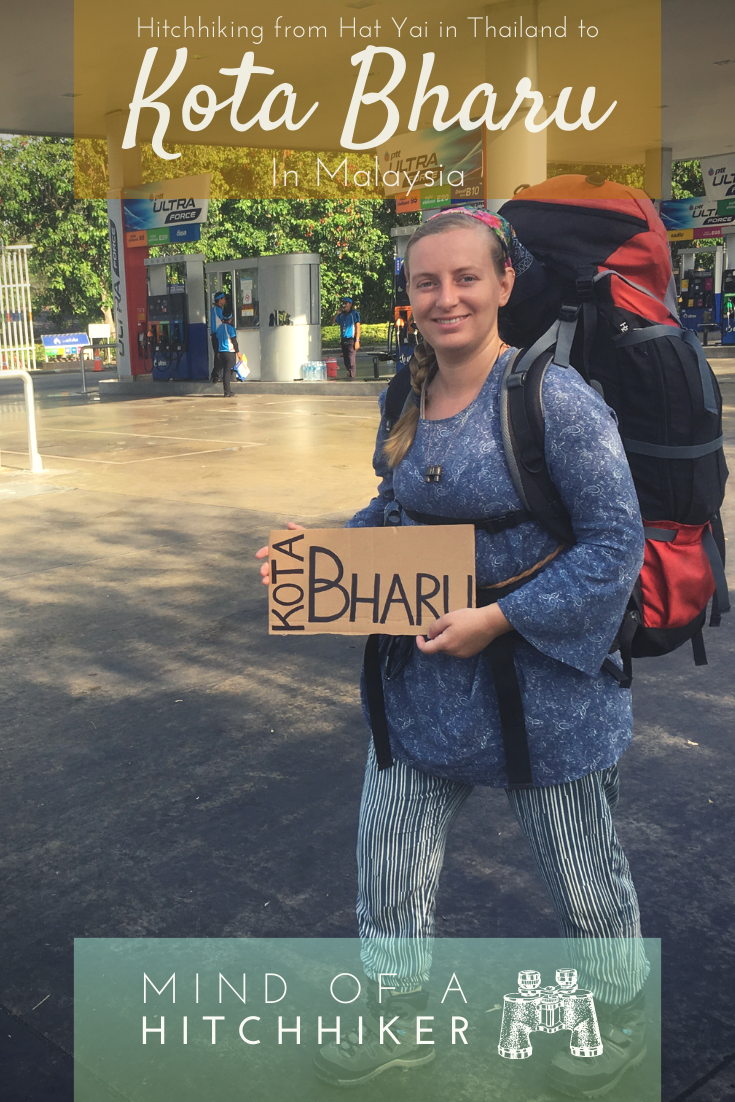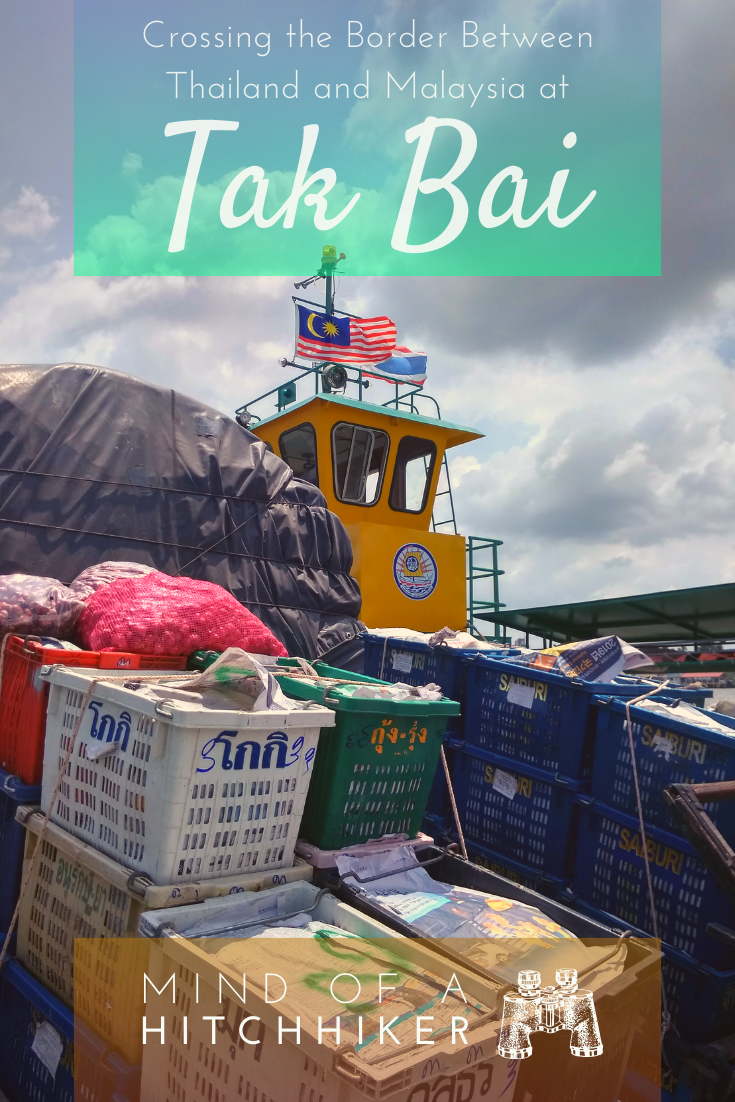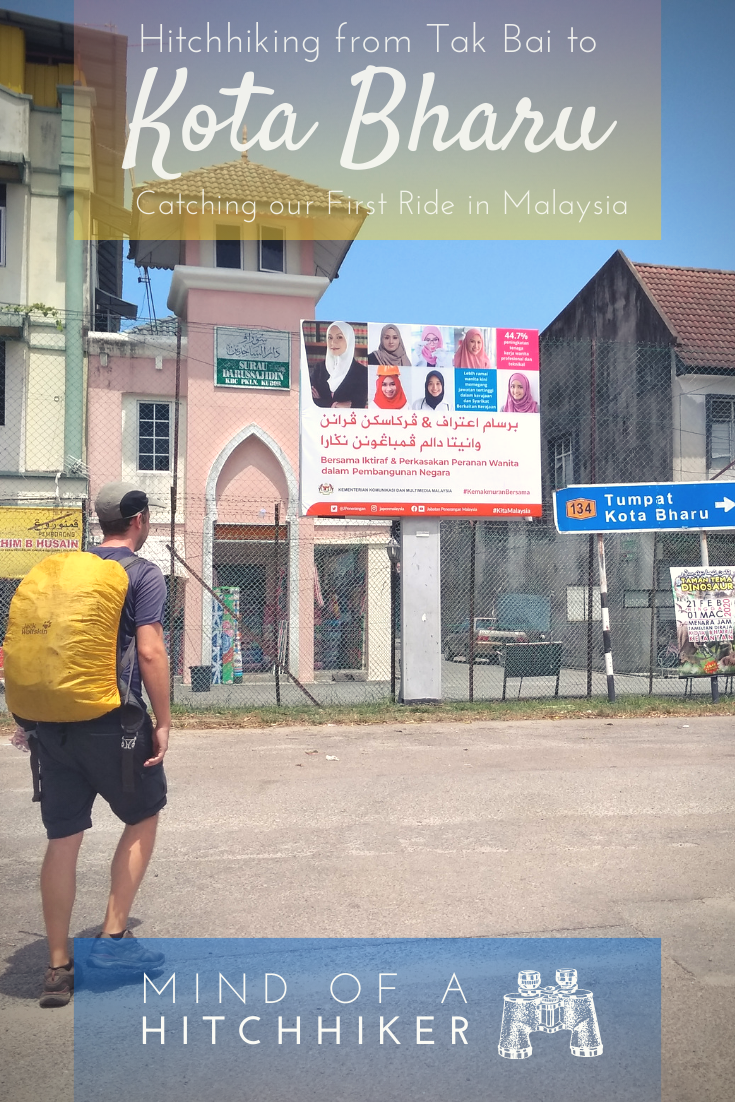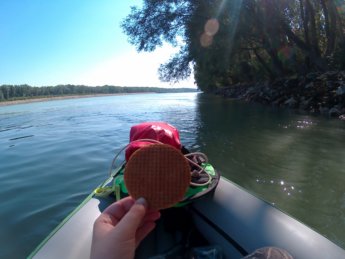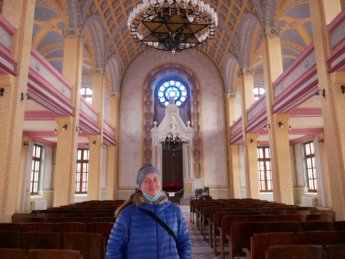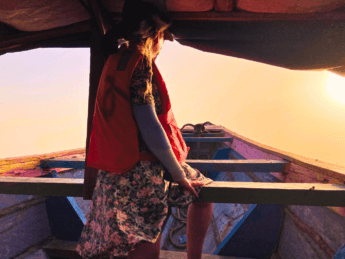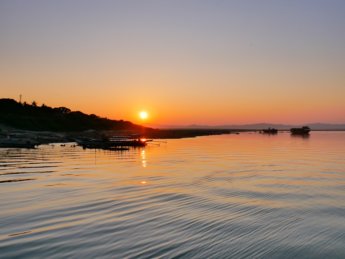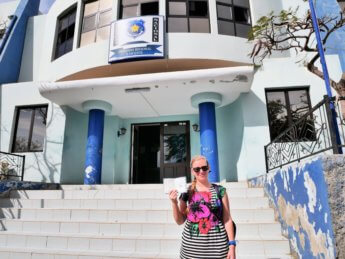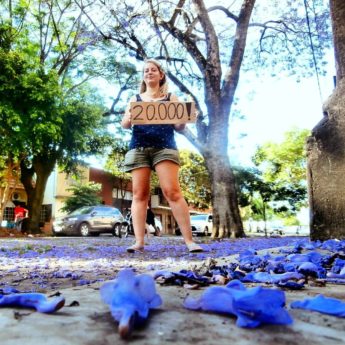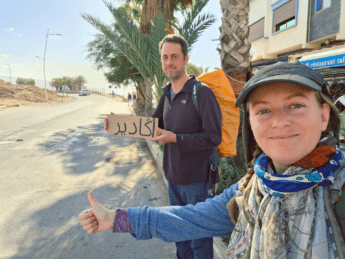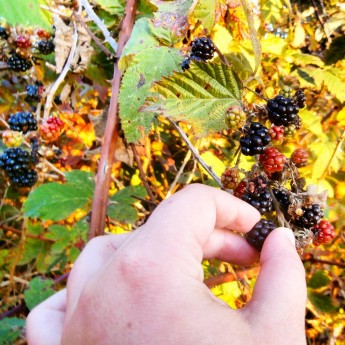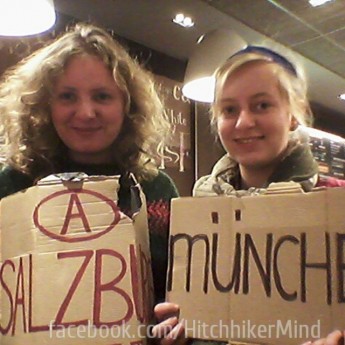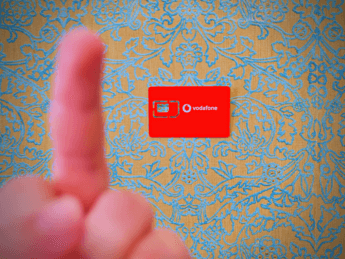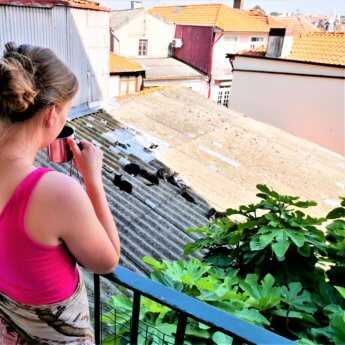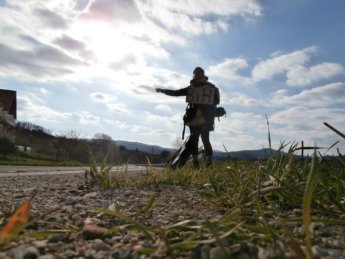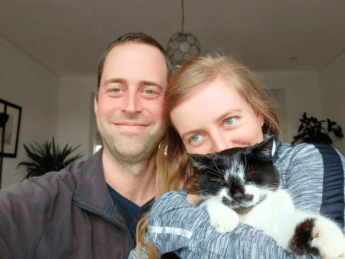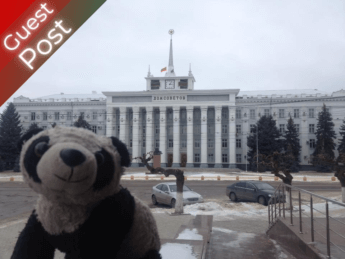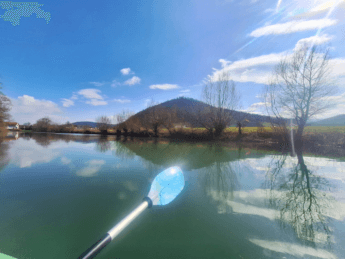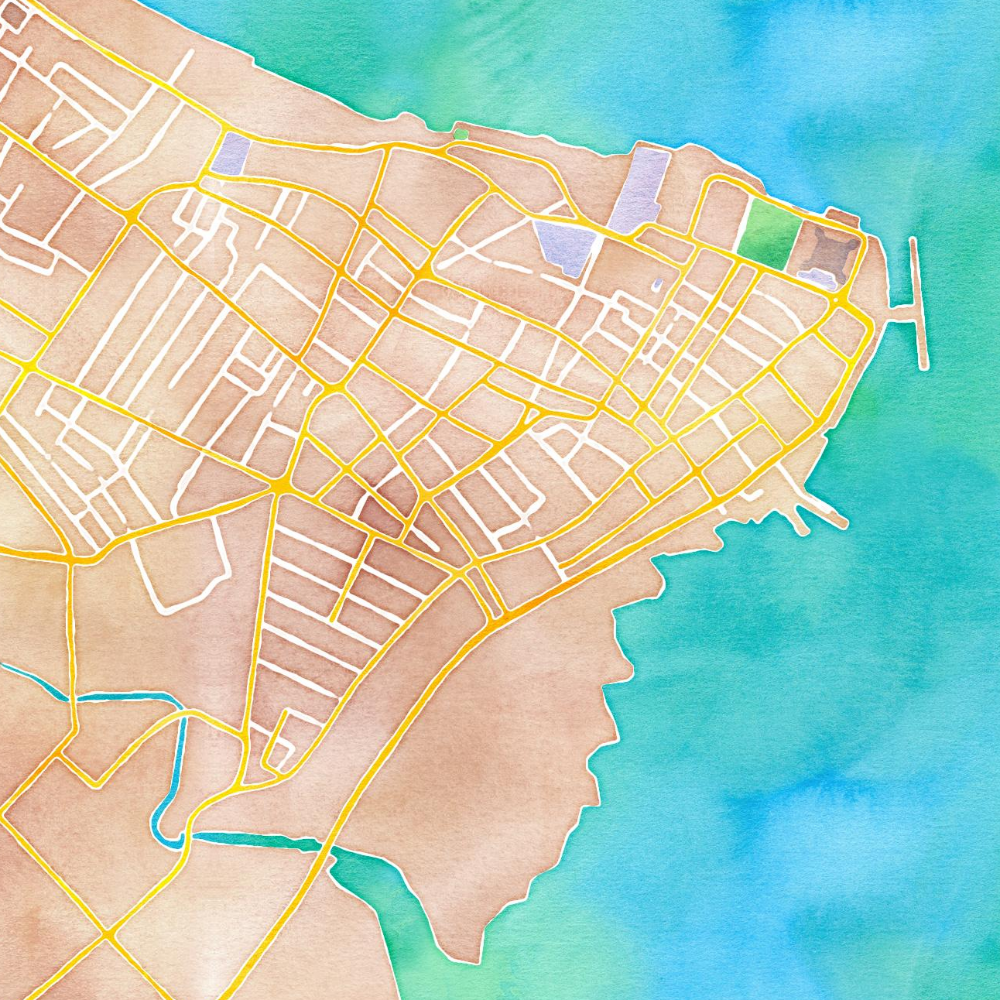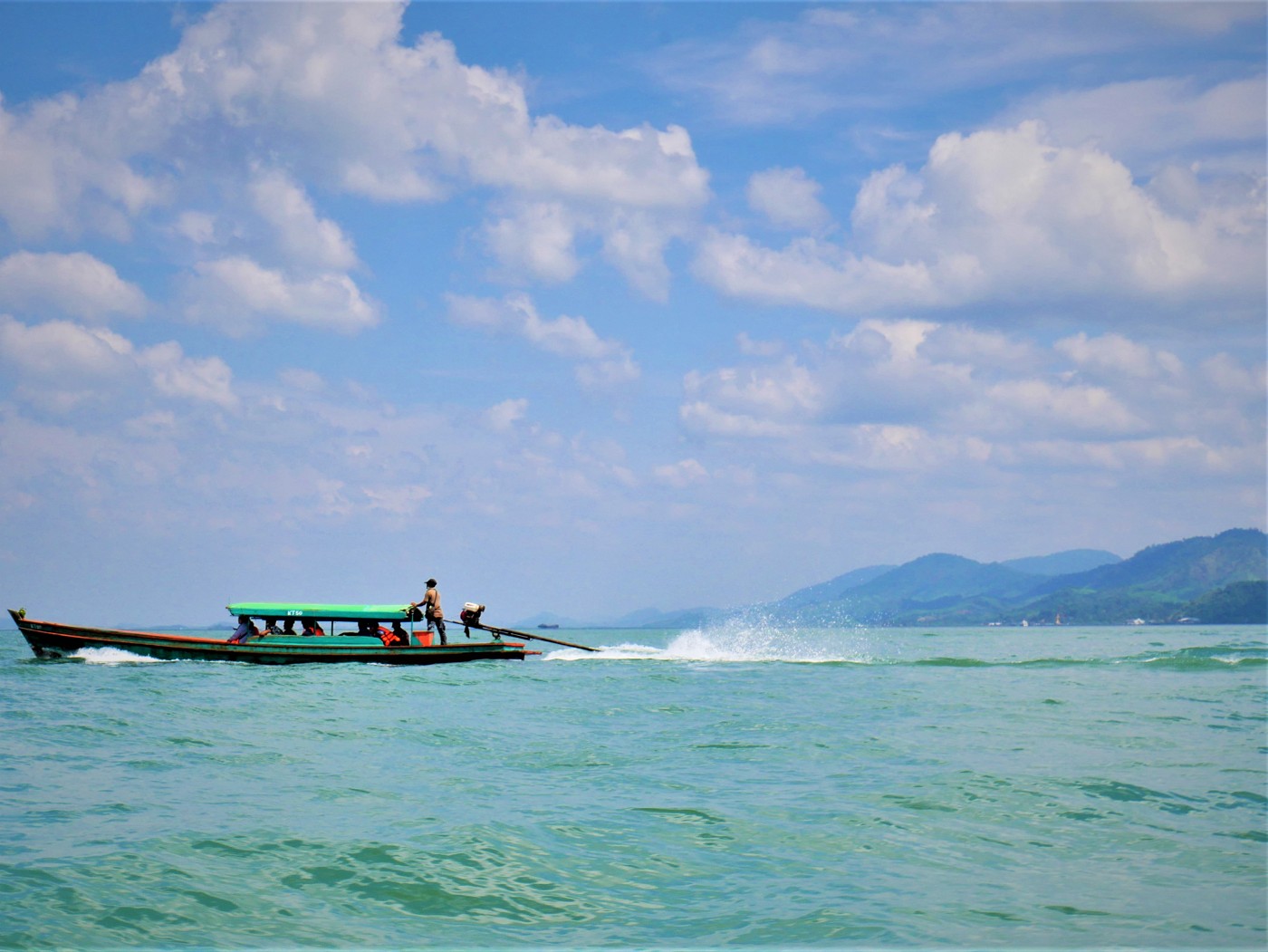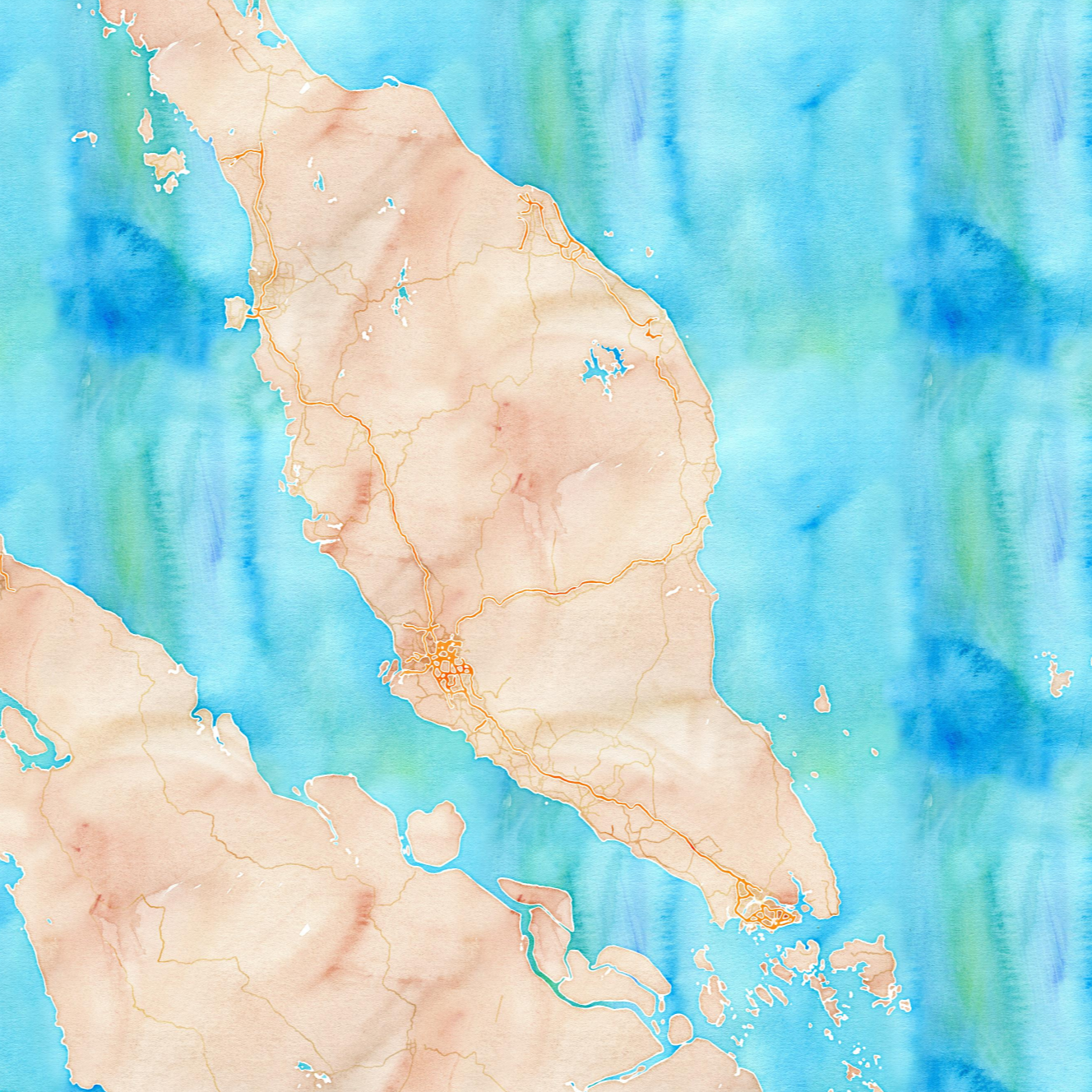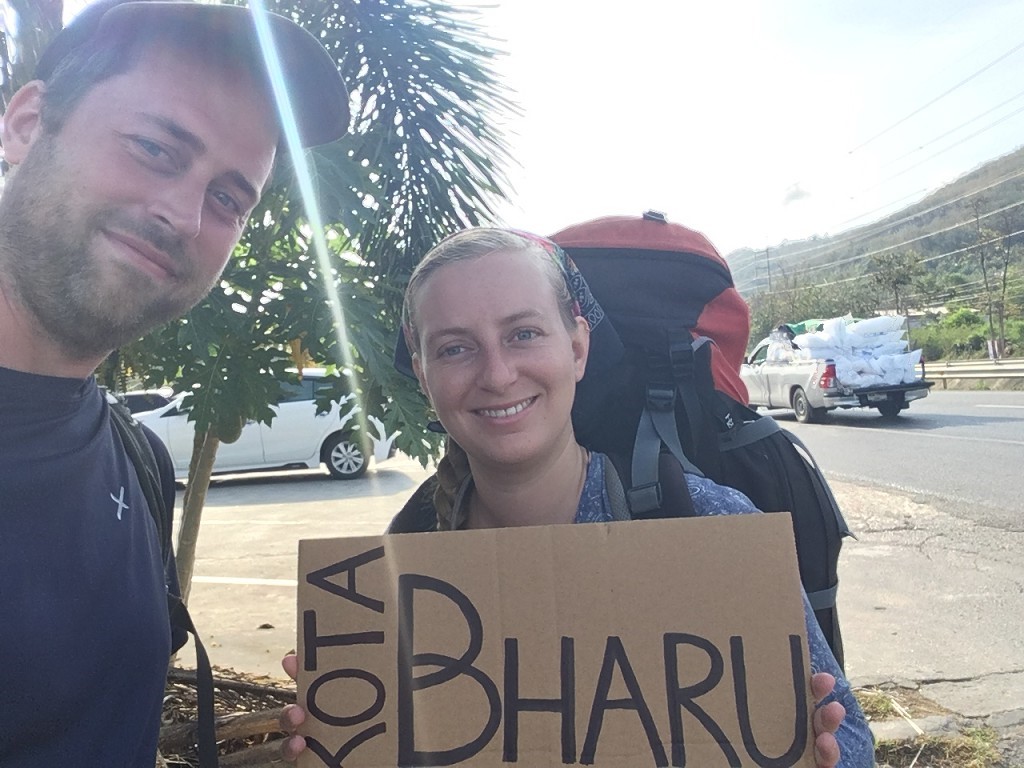
Things in this story happened on Thursday the 27th of February, 2020. Jonas and I hitchhiked from Hat Yai (Songkhla) in southern Thailand to Kota Bharu (Kelantan) in Malaysia. We took the Tak Bai river border crossing. This is my first time in Malaysia and Jonas’ second visit.
Taking a Grab to the Hitchhiking Spot
After five days of enjoying a few of the sights in Hat Yai, it was time for us to move on. Besides finding a new spot to hitchhike from, we didn’t need to prepare much for this hitchhiking day. Jonas and I found two viable gas stations to hitchhike from on Thailand Route 43 that starts on the south end of Hat Yai. We picked the state-owned PTT gas station over the Shell because it’s one further down the road. The other side of the Hat Yai (หาดใหญ่) hitchhiking sign had Kota Bharu on it, so I didn’t need to make any new hitchhiking signs.
I wasn’t feeling very well the morning of departure. I was very, very dizzy. We were ready to depart one hour later than hoped. Jonas arranged a Grab after we checked out from our hotel PM Residence and got our ฿500 deposit back. The driver showed up at 8:25 and we put our backpacks in the trunk. The driver wore a face mask, which is smart with his job irrespective of what kind of virus is making the rounds. While the cases in Thailand have remained relatively stable, the public fear for COVID-19 has spread significantly. All the while Thailand has the second-highest number of traffic-related deaths in the world, only beat by Libya.
We pull into the gas station at 8:35 and get our backpacks out. Jonas pays the driver in-app and he drives off to the nearest U-turn on the highway.
Catching a Ride to Narathiwat
It’s sunny, but there’s some shadow. We take some photos and then discuss how to position ourselves. Do we want to also attract attention from drivers on the highway, or just from people who are using our gas station?
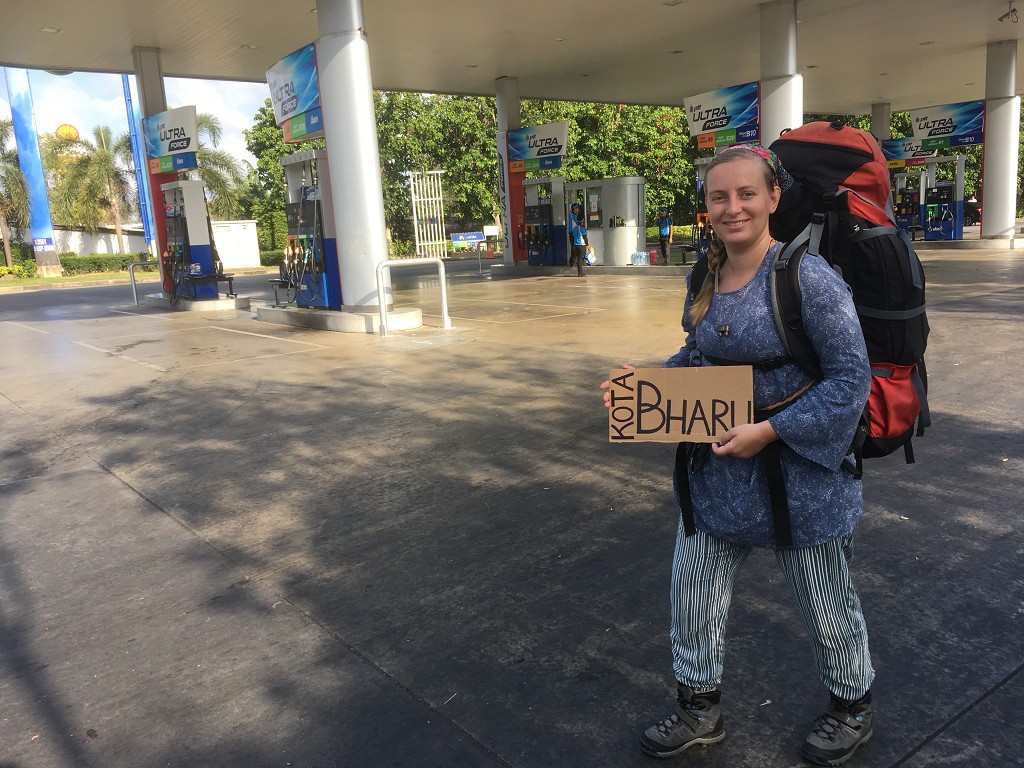

We take up a spot near the main road. I’m looking for Malaysian license plates, but I’m still not exactly sure what they look like. I must have seen them in Hat Yai, but not consciously processed that this is indeed a Malay license plate. I figure that I have seen them, but that they’re so generic that I didn’t realize it; they have three Latin script letters followed by four numbers, white on black.
We’re really close to some kind of unidentifiable business. A woman and a man approach us from said business to look at what we’re doing. We show them the sign for Kota Bharu and say we’re going to that city in Malaysia. They don’t really seem to know where in Malaysia is (which is fair enough), and then tell us that we’re in the wrong place to go to Malaysia. They mean well, but as usual, they don’t really understand what we’re doing. The young woman doesn’t really let go and says we should go to the bus station in Hat Yai. “This road goes to Pattani. Not Kota Bharu.” They eventually leave when we say “It’s OK. Thank you.” repeatedly while smiling.
I decide that most waves of traffic on the highway are too dangerous to try to stop a vehicle. We don’t want to cause an accident with distracted drivers. Cars and motorbikes are using the shoulder behind us to drive against the direction, which makes stopping a car on the highway simply too dangerous. So we direct our attention more to the slow driving people at the gas station.
It’s taking a while, so Jonas applies sunscreen. Halfway done, a small vehicle stops for us. The driver rolls down the tinted window and speaks to me. I can’t understand what he’s saying and ask him where he’s going. He says “Narathiwat” very clearly, which is a town and province I remember from the map. Though I don’t know exactly how far that is, I know it’s good enough. So I tell Jonas it’s a go.
I get in the backseat behind the driver with my and Jonas’ backpacks to my left. Jonas sits in the passenger seat. We drive off at 8:50.
Videocalls and a Bus Crash
I look up Narathiwat (นราธิวาส) on a map to confirm it’s good. Narathiwat is the last province of Thailand we will travel through to get to Malaysia. It’s all good and now I can enjoy the ride for a bit.
Our driver’s name is Thanat and he’s a police officer with a special division. He shows us his badge and makes sure to pass it around to all of us to take a closer look. We introduce ourselves too.
His home is in Hat Yai but I think his work is in Bangkok. He’s now going to the city of Narathiwat for work. He drives fast and is very excited to talk to us. He makes a video call to a colleague and shows us around, saying “Good morning, good morning!” to his friends, colleagues, and family and then introducing is as “Jonath” and “Ilith”. Many of the people we video call with are also driving.
It’s 180 kilometers from Hat Yai to Narathiwat. We drive past so many military checkpoints but are never stopped. I see there’s no religion on Thanat’s dashboard and wonder if this is perhaps a rental car. But his English is very limited and Google Translate only knows a little bit of Thai. We ask him a few more questions with the help of Google Translate. We find out he’s been working as a police officer for 25 years, which is crazy because to me he looks about 35 years old. His Thai sounds different than what I heard before and I wonder if it’s a southern Thai dialect or something like that.
Some 25 minutes into our ride, we pass a major bus crash after the town of Chana (จะนะ). The two-level bus is toppled over, lying flat in the ditch. It looks really bad. Jonas missed it, but I think Thanat saw it too.
More Video Calls with the Thai Police Force
We make another video call the minute we have internet again. This time, it’s a colleague who is cooking pad thai while shirtless. He shows his fresh tattoo, which is the logo of Liverpool FC. We’re driving swiftly through lots of small villages. Once we hit the coast, we catch the first (and for now the last) glimpses of the Gulf of Thailand. This shallow sea ends at Kota Bharu, where it becomes the South China Sea.
We call again with another colleague of Thanat, who is shirtless. Thanat introduces Jonas to him with his “Good morning, good morning!” spiel and then points the camera at me and holds it there for a good minute. The man on the other end lets out an exasperated gasp and descending whistle and continues to male gaze at me and say things in Thai about me to our driver for the remaining time. I’m really disgusted that Thanat is facilitating this ogling and directly turn my attention to my phone while I’m hoping this ride will end soon.
By 10:00, we’re driving through the town of Pattani (ปัตตานี), which is the capital of the province of the same name. We’re now in the area of the far south of Thailand where the majority of the population practices Islam. The frequency of mosques has steadily increased since traveling southward of Ranong, but the sizes of mosques had remained small until now. Here they’re much larger.
We drive past the Krue Se Mosque on our way out of Pattani. It’s one of the oldest mosques around this area and made mostly of bricks. It looks like it’s in ruins without the dome, but it’s actually functioning and quite a pretty sight. There’s a big sign outside saying “Terima kresek”, which mysteriously and tragically translates to “accept the crap” on Google Translate. Huh? Hmm. (If you know Kelantan-Pattani Malay and know the actual translation, please write it in a comment!)
As the number of mosques increases, so does the number of military checkpoints. Not all are manned and require slowing down, but by now there’s a checkpoint every five kilometers. This has to do with the South Thailand insurgency—a violent conflict involving a poorly-drawn border by the British and subsequent Thai assimilation attempts of the culturally, religiously, and ethnically Malay people that live in these regions. Back in 2004 in Tak Bai, 85 Muslim Thai protesters died at the hands of the police and the military. Whatever you read about what happens in the south with the insurgency, there’s always the conclusion that the police and/or military used excessive force. Now riding with the long arm of the law makes me… uncomfortable, to say the least.
The next video call is with Thanat’s boss. I’m dreading this shit by now and let Jonas know that I’d like the reception to go to shit, stat. The guy does not wolf-whistle or stare very uncomfortably. The phone call lasts for quite a long time and mostly it’s between the boss man and Thanat. The boss is doing a lot of things on the side. I’m trying to identify what the black thing is in his hands, but eventually, he shows the object by posing with it: a handgun. The big boss man is toying around with his handgun and fucking biting on it like a disturbed teenager. There really are 1312 reasons why to oppose the uniform.
I’m hoping this ride will end soon.
Dropped Off Outside Narathiwat
By the time we’re entering the outskirts of Narathiwat, we’ve made about nine video calls to two women and about five random men. We asked to be dropped off at the last military checkpoint on my map. While the checkpoint does exist, it’s abandoned right now. Our driver doesn’t stop.
Jonas and I have experienced a couple of times by now that people in Thailand have ignored our specific wishes to be dropped off. We’re afraid that Thanat will drive us all the way to the border crossing in Tak Bai, which would be an 80-kilometer detour for him. My secondary motivation as a hitchhiker to be dropped off along someone’s route is that I don’t want to waste their time. My primary motivation is that hitchhiking is good for the environment, and people driving much extra for our convenience defeats the environmental purpose of hitchhiking.
There’s one last place where it makes sense for us to exit the car: at the junction where the bypass around Narathiwat starts. Jonas tells Thanat once we see the road sign that we want to get out there. Thanat agrees and slowly we roll into the shoulder before the junction. We thank Thanat for the ride and wish him a good day. I’m very happy he listened to our request.
It’s 11:10, which is quite a good start of a day for a border crossing hitch. We cross the road and walk to the bypass. The distance is much further than we anticipated. There’s a small side road that’s quiet and private enough for us to make an urgent pee break.
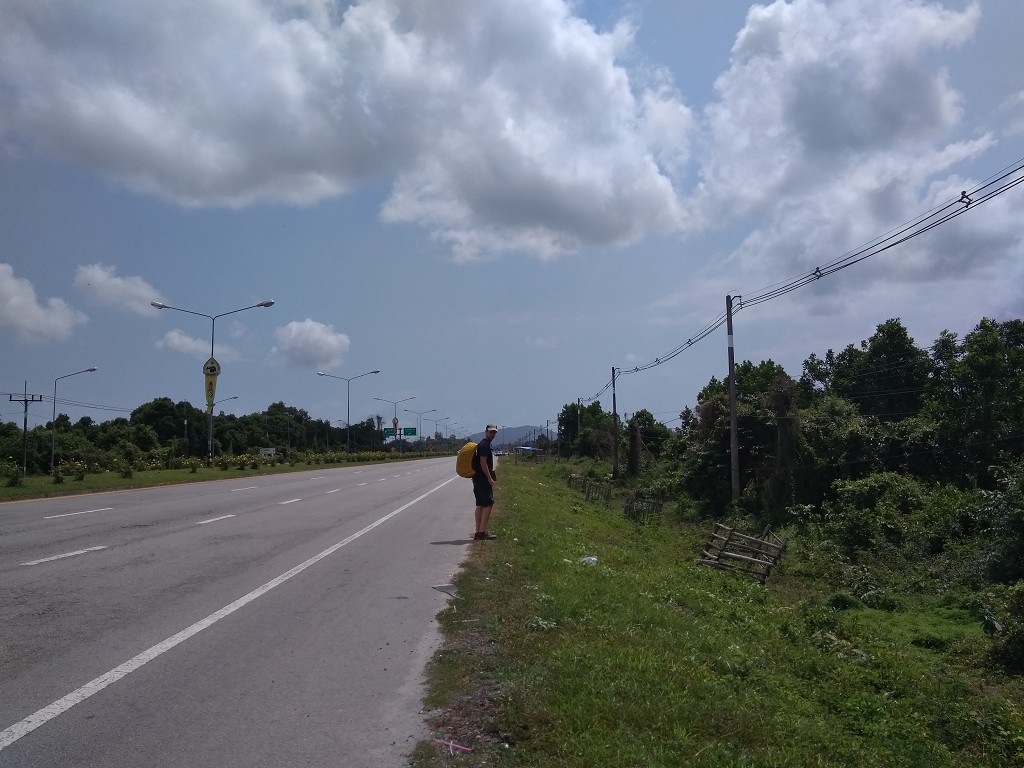
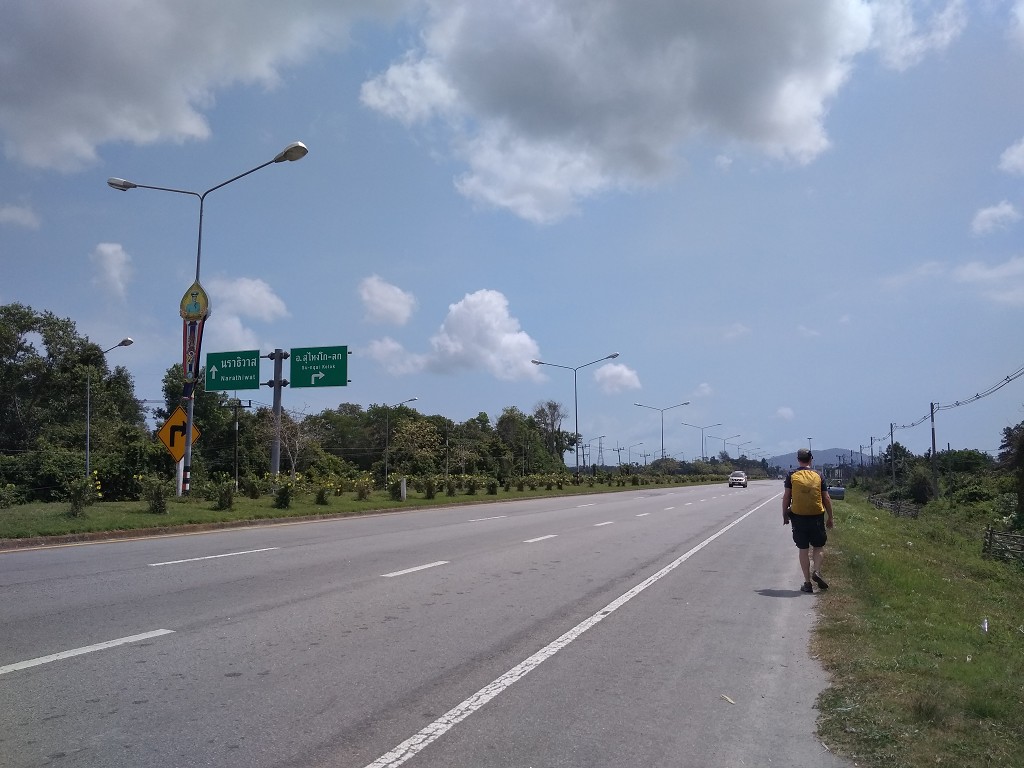
We cross multiple roads to our second hitchhiking spot of the day. There are four lanes of traffic here, which is a bit much. Jonas argues in favor of staying here at the four lanes because traffic is still slow near the junction. I’m arguing for walking a bit until the four lanes become two just a few hundred meters away. Eventually, we decide to stay put and finish applying sunscreen. Jonas forgot which limb he already covered. It’s 11:25 and many people smiling and waving at us to supposedly say they’re not going to Kota Bharu but wish us good luck.
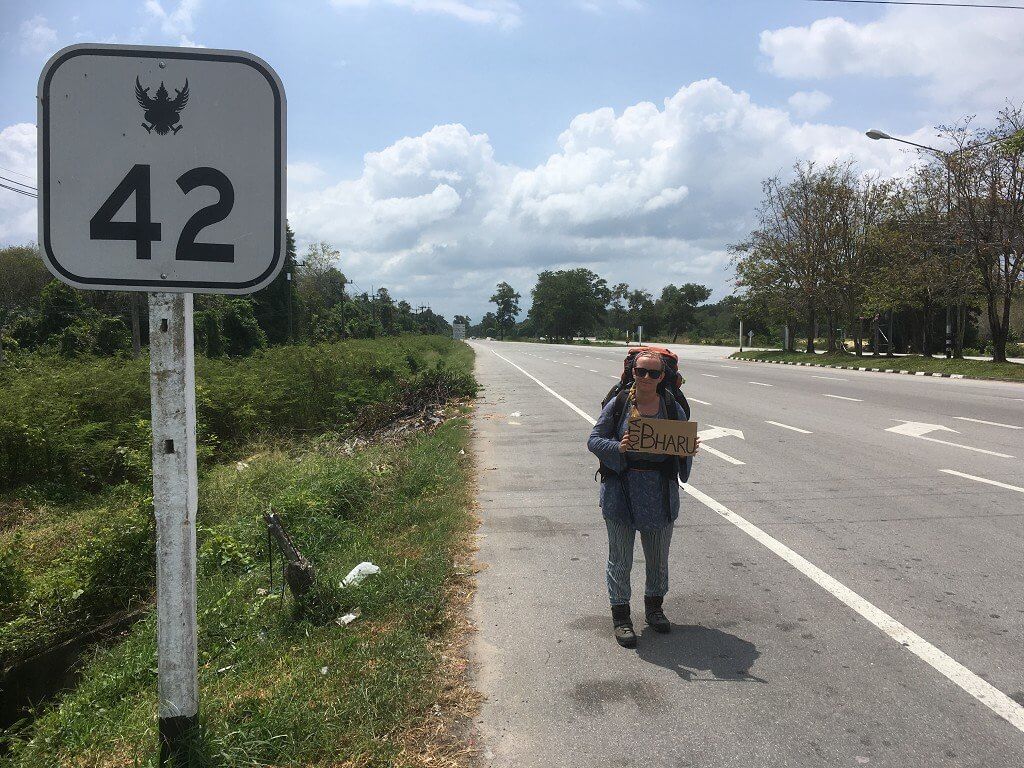
Actually, there are two border crossings ahead of us: one is the Tak Bai crossing which involves a ferry across the Sungai Kolok/Golok River. The other one is the Sungai Kolok border further inland that’s a bridge across that same river. The Tak Bai border has our preference because it’s a shorter journey. The inland border would also be OK with us as long as our drivers would go to Kota Bharu afterward.
Our Final Hitch in Thailand to Tak Bai
Ten minutes later, a small van from the Narathiwat Provincial Electricity Authority stops for us. I’m 100% certain he won’t cross the Tak Bai border into Malaysia, but I ask the man if he’s going to Tak Bai. He gestures vaguely to us to get in the car, so we do. I’m in the back with the backpacks and a lot of toolboxes around me. Jonas sits in the passenger seat in the front. It’s nice to be in the shadow again.
At the next major crossing, Jonas asks if he’s going straight here. The man says he needs to go right, but he’s going straight to Tak Bai for us. Jonas suggests for us to get out at the crossing, but the man insists that we should stay in the van. I’m sitting too far in the back to really communicate with them and help to make sure that we don’t want him to drive out of his way.
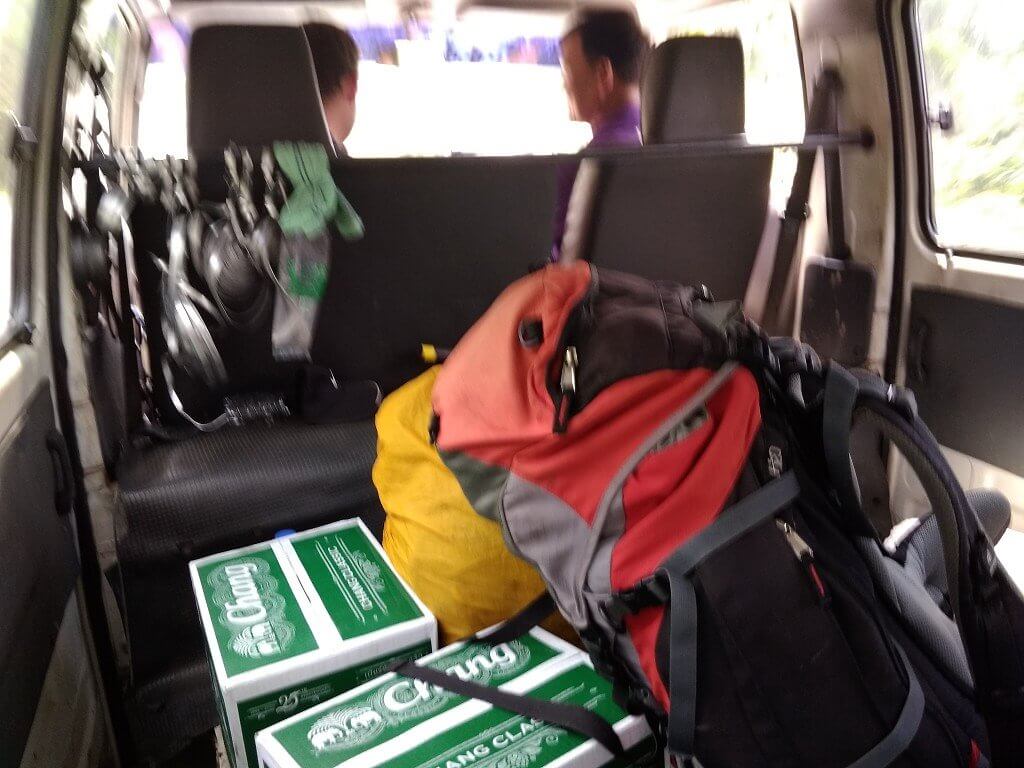
So after all, it seems like someone might have driven us several kilometers out of their way to help us get to where we needed to go out of kindness. These things make me feel very ambivalent; of course, I’m happy to arrive early at the Tak Bai border, but I’m sure someone else who actually needed to go there would have picked us up eventually.
I decide to enjoy the ride and the last views of Thailand. Our driver races down the good roads of Thailand and into Tak Bai town. Everything seems geared towards import/export and most of the signs are bilingual.
Our driver doesn’t need any clues to find the Tak Bai border crossing. We drive onto the terrain and directly past several signs that say that cars that don’t cross the border shouldn’t continue any further. At customs, a man in uniform stops the car and asks the driver what’s going on. They chat a little and the customs officer says that this is our exit. We take all our luggage and thank our driver for the ride. We make one last wai for him. He turns around and continues his business.
It’s 12:10.
Crossing the Tak Bai Border Across the Sungai Kolok
The customs officer doesn’t actually want to look at our backpacks and points to the immigration building. We walk to the big building past a few other people with their passports in hand. All of them have Thai or Malay passports. It’s very quiet.
At immigration, Jonas goes first. Without any talking, he gets his photo taken one last time and the four fingers of his right hand get scanned. I can hear the pleasurable sounds of wetting the stamp and slamming it in his passport from where I’m standing. Jonas turns around with his passport open and the stamp drying. Now it’s my turn. Things proceed similarly and before we know it I’m also patiently keeping my passport open to let the fresh exit stamp air dry.
We exit the building and see that the car ferry is full and about to leave. Both of us add a little pep to our pace to run onto the ferry. Phew, made it! Now how do we get a ticket?
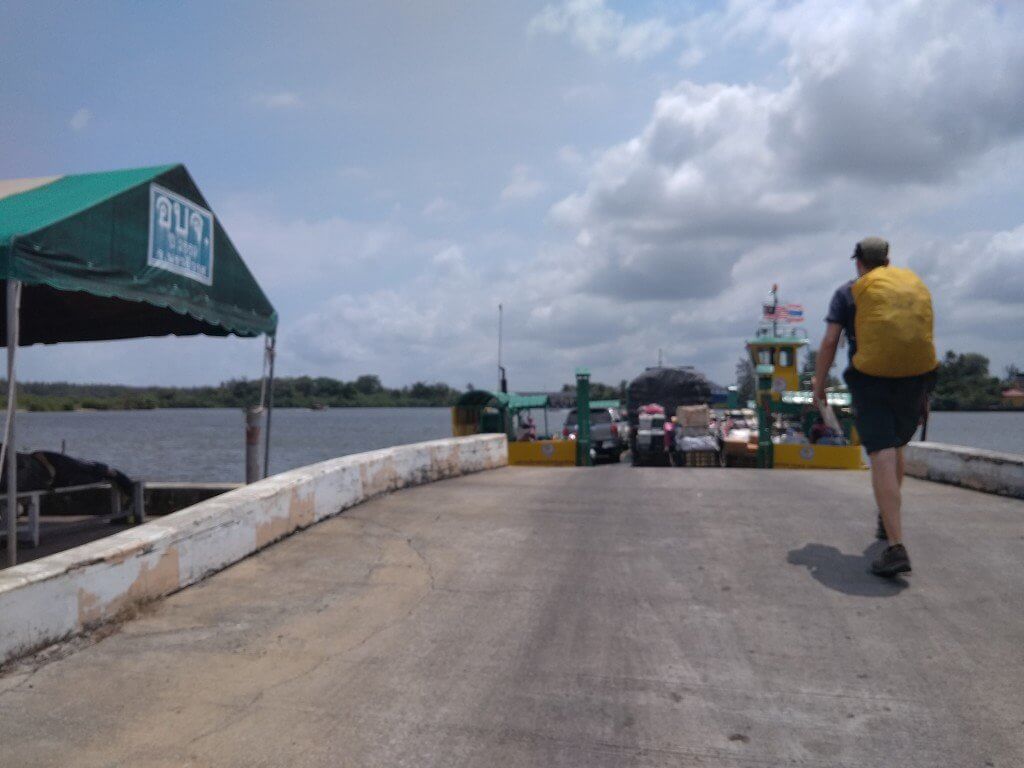
Jonas had done the research on this Tak Bai border ferry. He’d told me that the car ferry leaves once an hour and that there’s also a foot passenger ferry. If we’d come at a lousy time, it would have been possible to charter a longtail boat across the narrow river, similar to how we’d done it between Kawthaung and Ranong. Luckily, we didn’t need to do that today.
We’re discussing getting off the ferry to find a ticket booth when suddenly a lady who is obviously the ticket vendor appears. She’s wearing a kind of utility vest with lots of paper booklets that contrasts nicely with her very feminine hijab. Jonas gets his wallet out. We get a very official-looking ticket with the price mentioned at ฿6 per person. She stamps the date on it and goes to the next people.
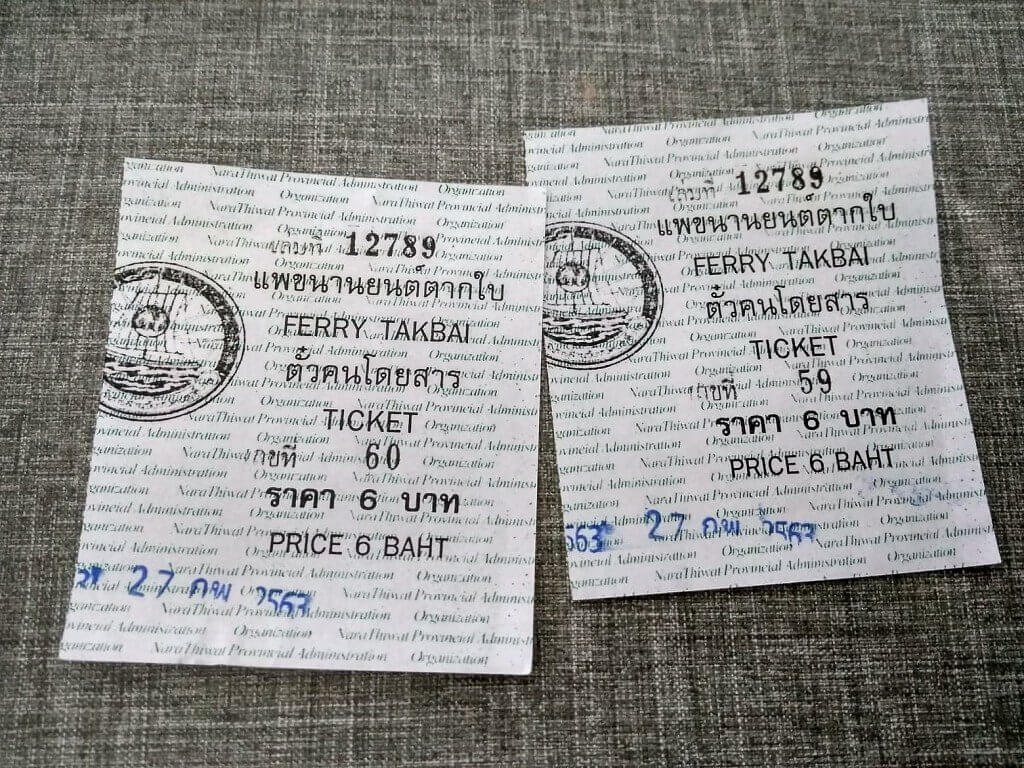
The ferry is full of cars, small trucks, and mostly very overloaded hand carts full of fruits and vegetables. The boat flies the flags of both Thailand and Malaysia. I walk around the boat to orient myself and try to spot the Sungai Kolok lighthouse in the river mouth. I’m very excited to go to Malaysia.
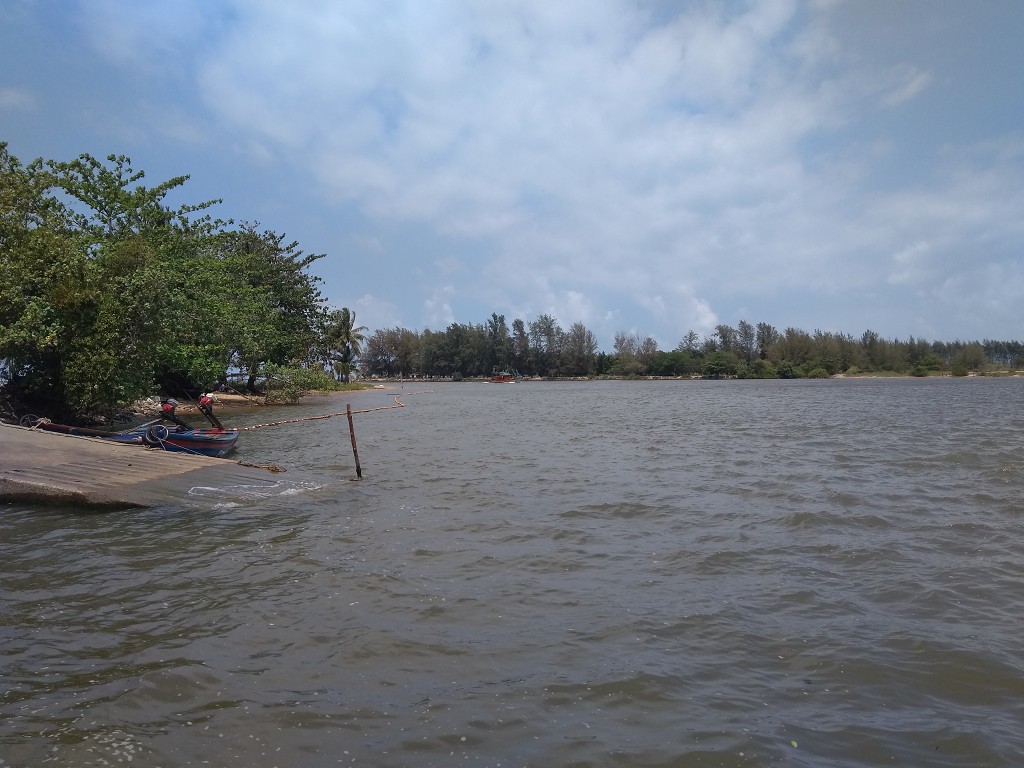
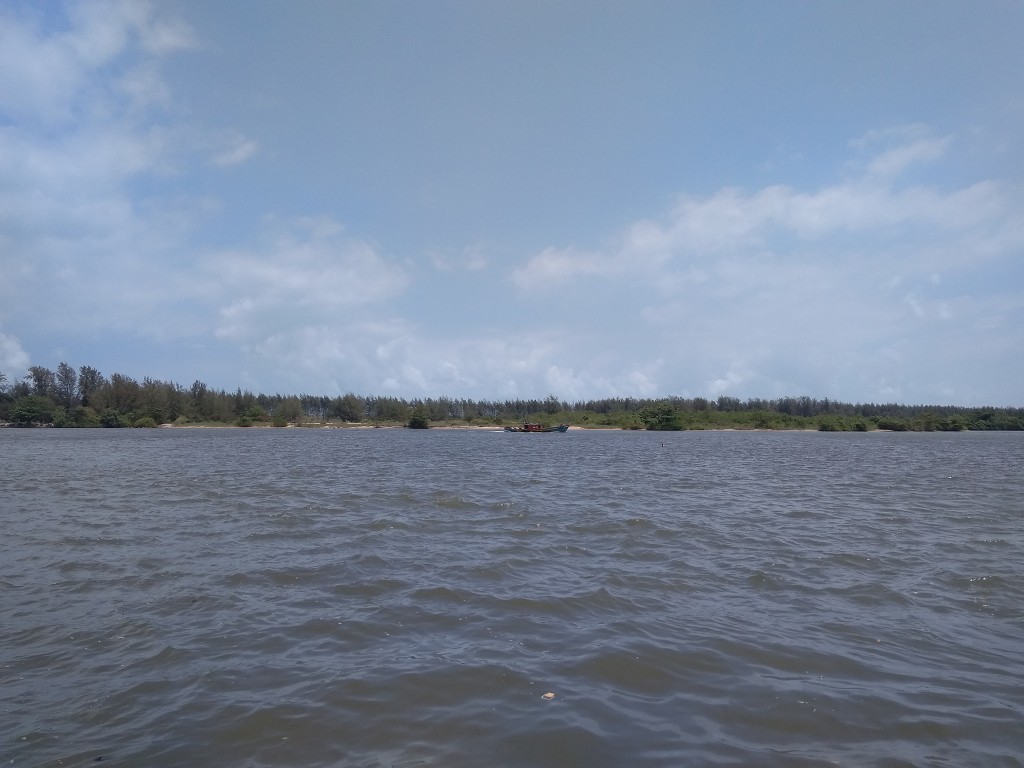
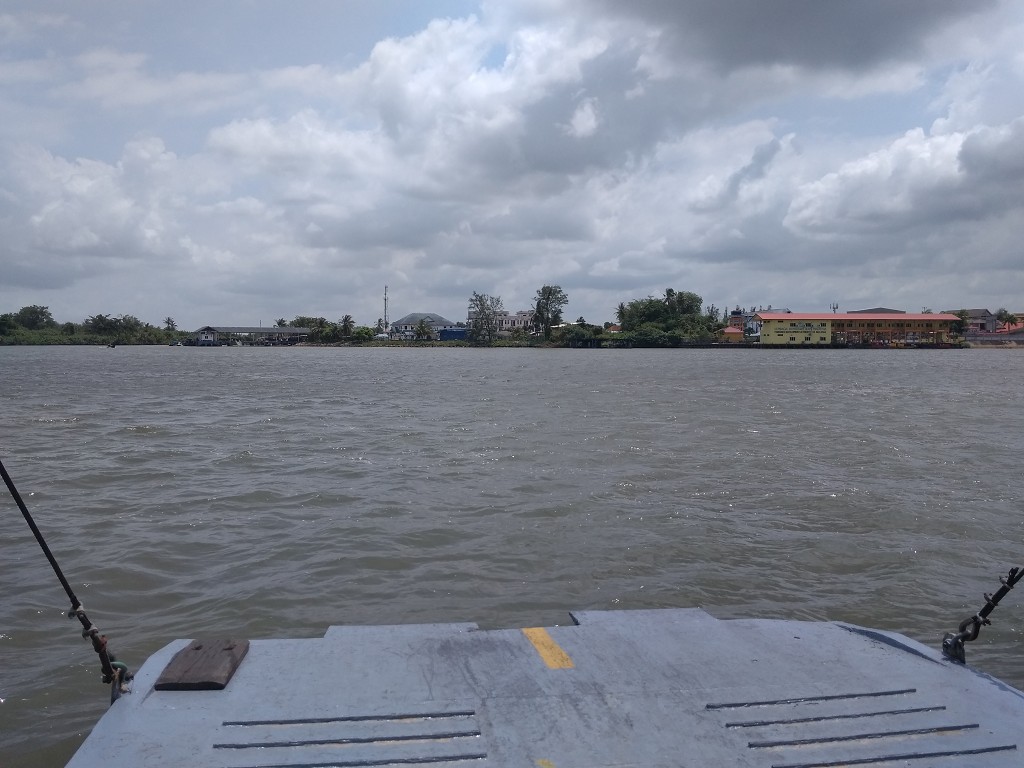
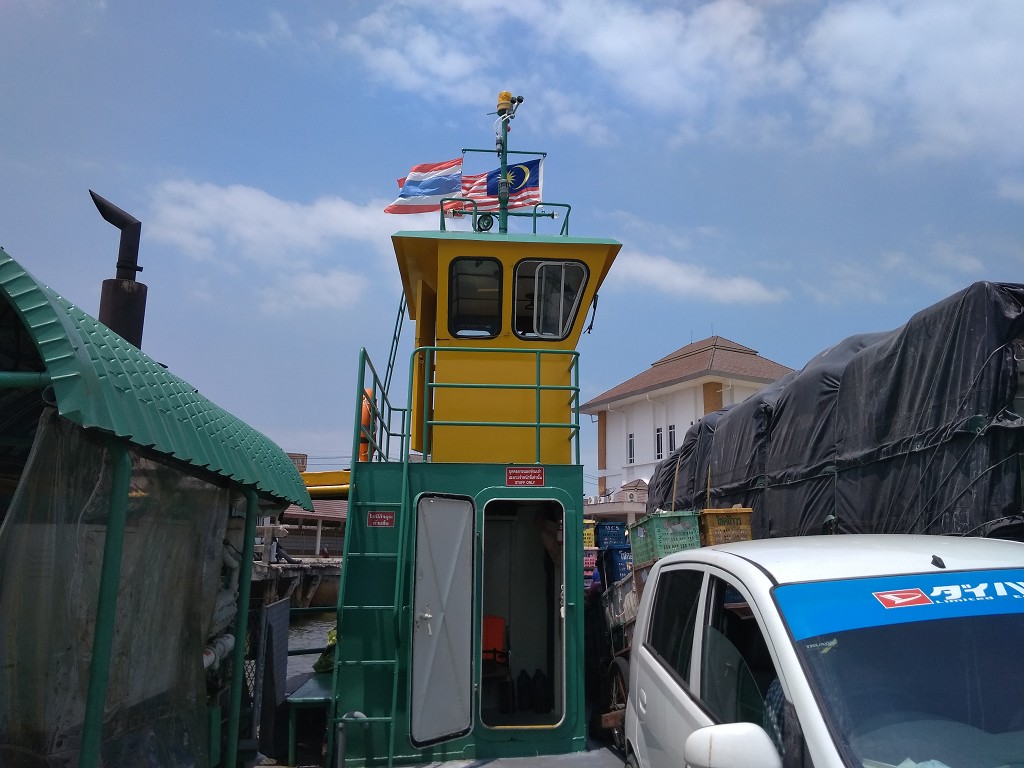
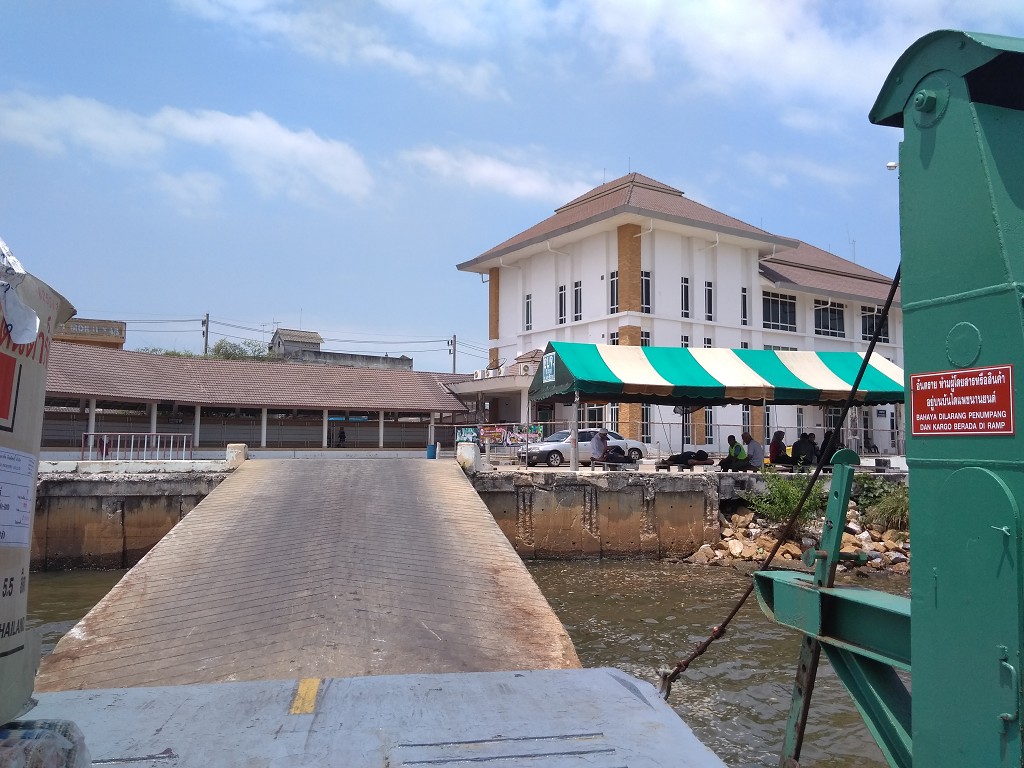

Just before the ferry ramp lifts up, a group of men in shalwar kameez and taqiyah hurries onto the ferry. They look very relieved once they see their group is complete and we’re going across. A man in a full-white outfit looks curiously in our direction and spots my Thai Hat Yai sign. He asks about the sign so I turn it around to show the Kota Bharu side. In English, he asks us where we’re from. I ask him if he’s Thai or Malay and he says he’s Thai. I know he doesn’t have a vehicle, but I ask him anyway if he’s going to Kota Bharu. “No, I’m on a journey to Indonesia.”
Ah, Indonesia… That’s really not so far away anymore!
“Wow, that’s a long way. Good luck!”
We sputter upstream with other boats around us on this lively border river full of commerce. Jonas books a hotel for the night to bridge our one-night gap we intentionally left open between our Hat Yai and Kota Bharu bookings. The jetty on the Malay side is very advanced. Once we land, the pedestrians and motorcyclists are some of the first to get off. Our previous conversation partner has one of the coolest retro backpacks ever for his trip. Jonas and I aren’t in a hurry, so we wait until most people are off the boat. Only the big carts are left when we walk ashore and find Malay immigration.
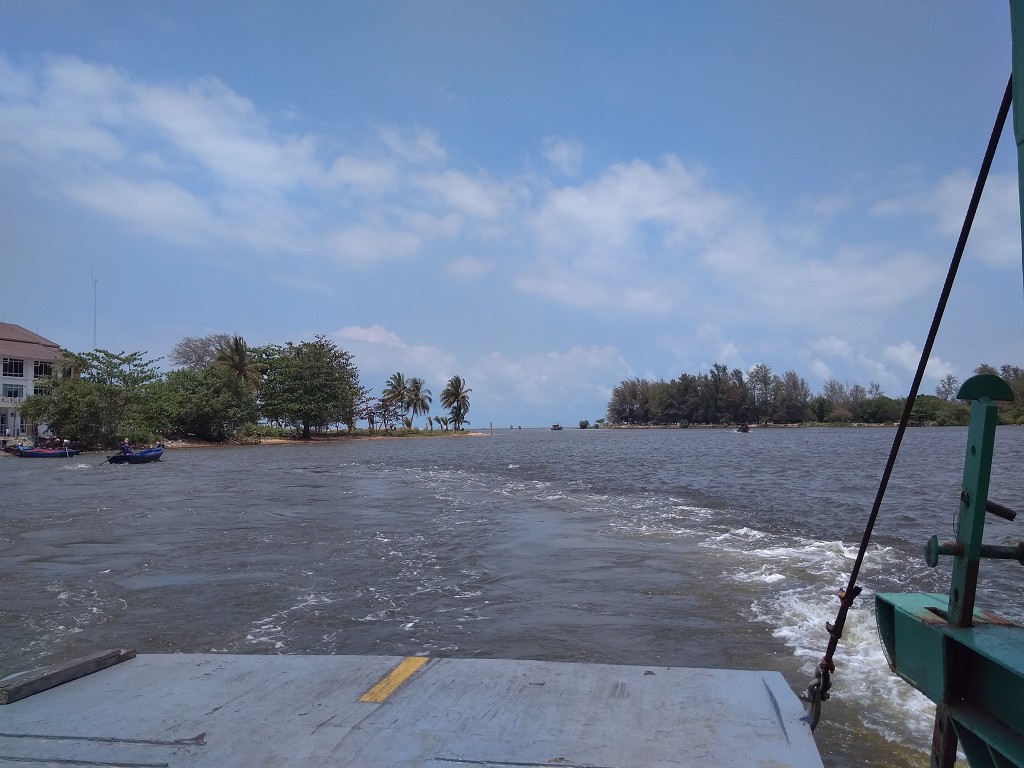
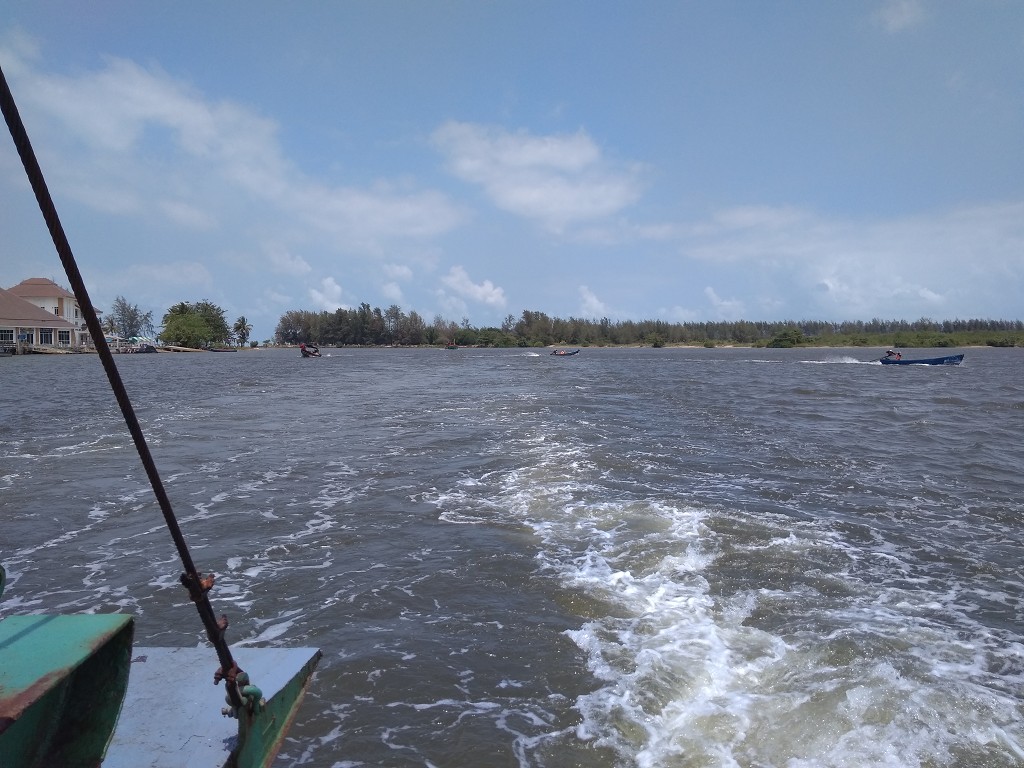
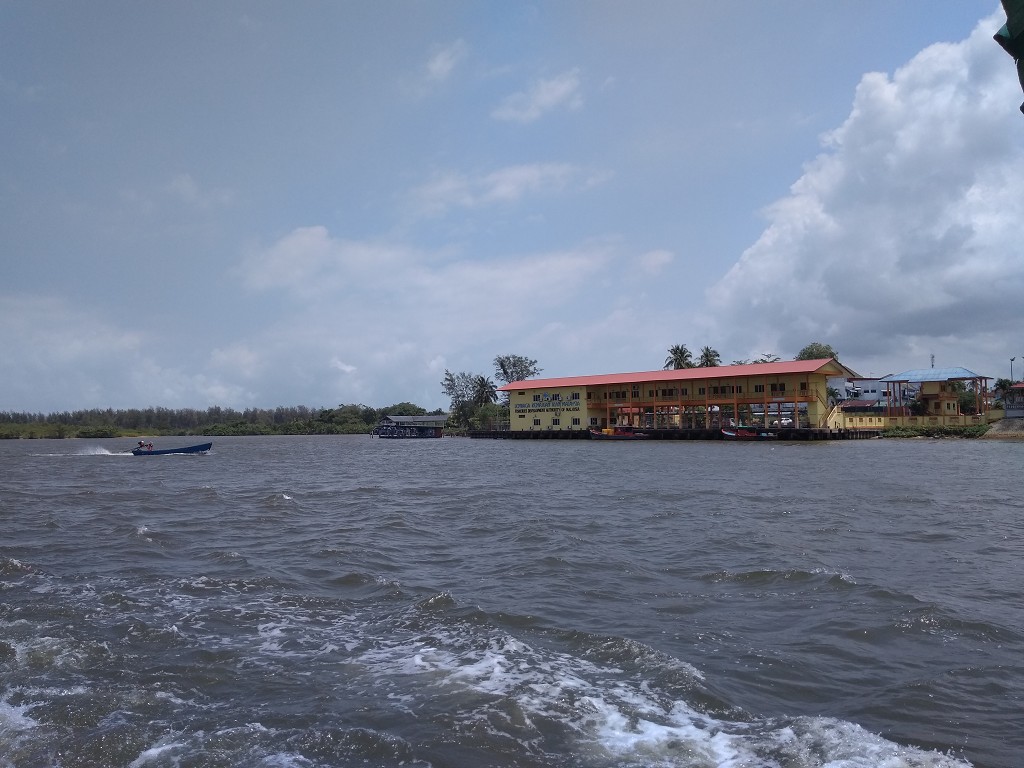

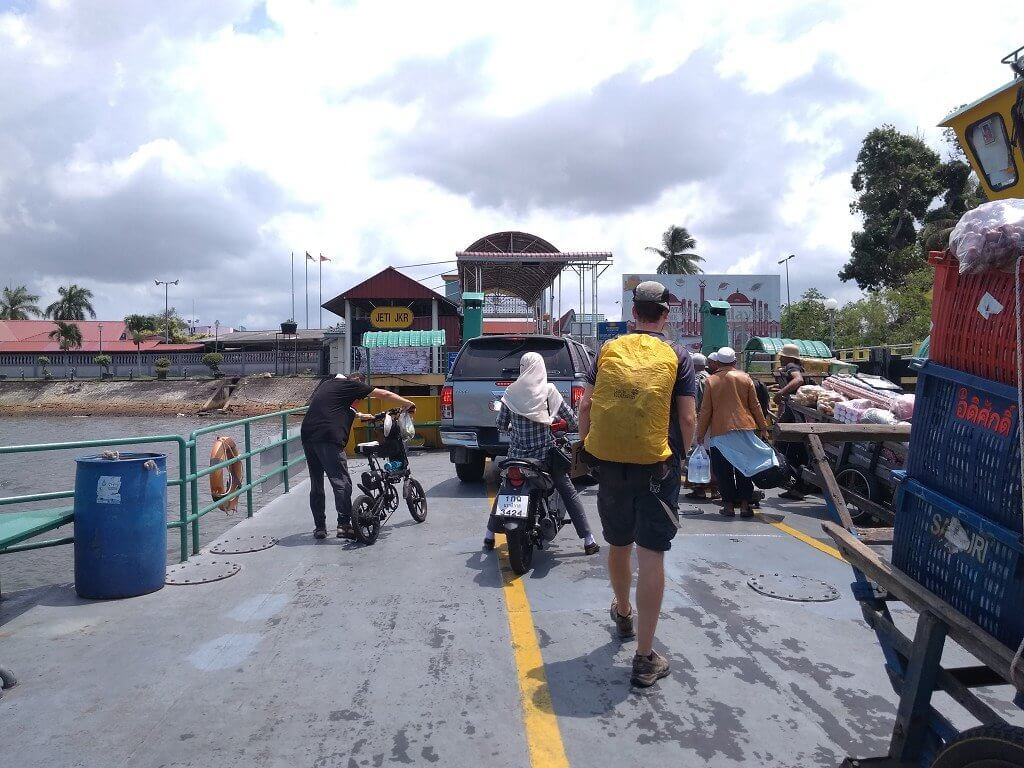
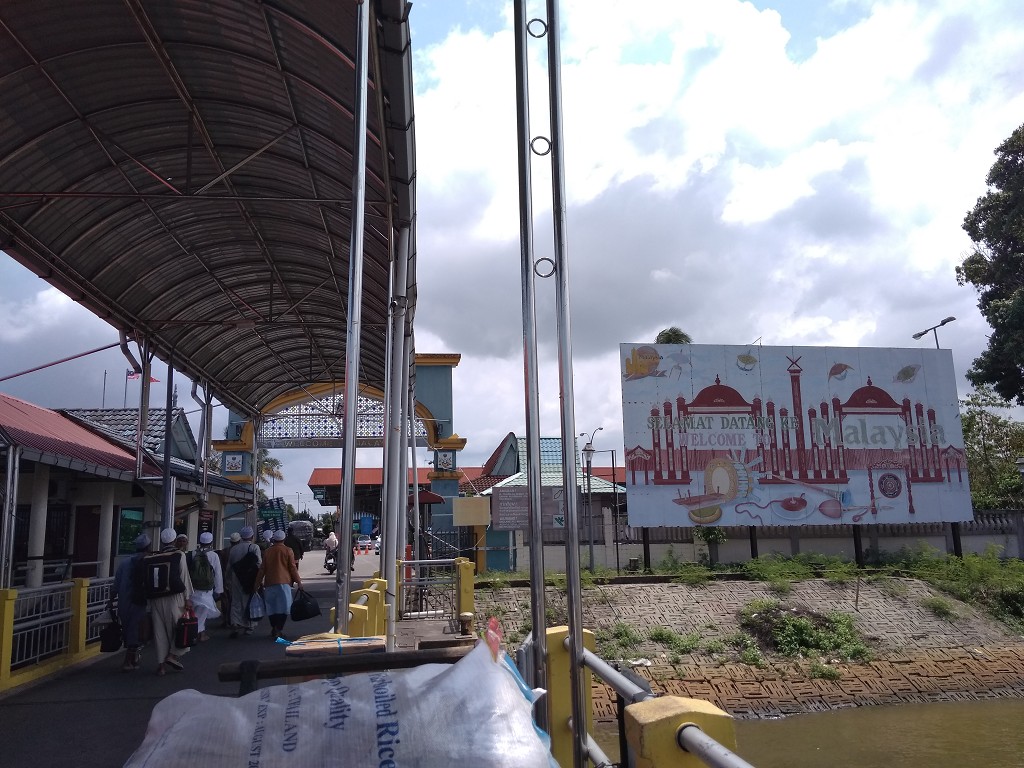
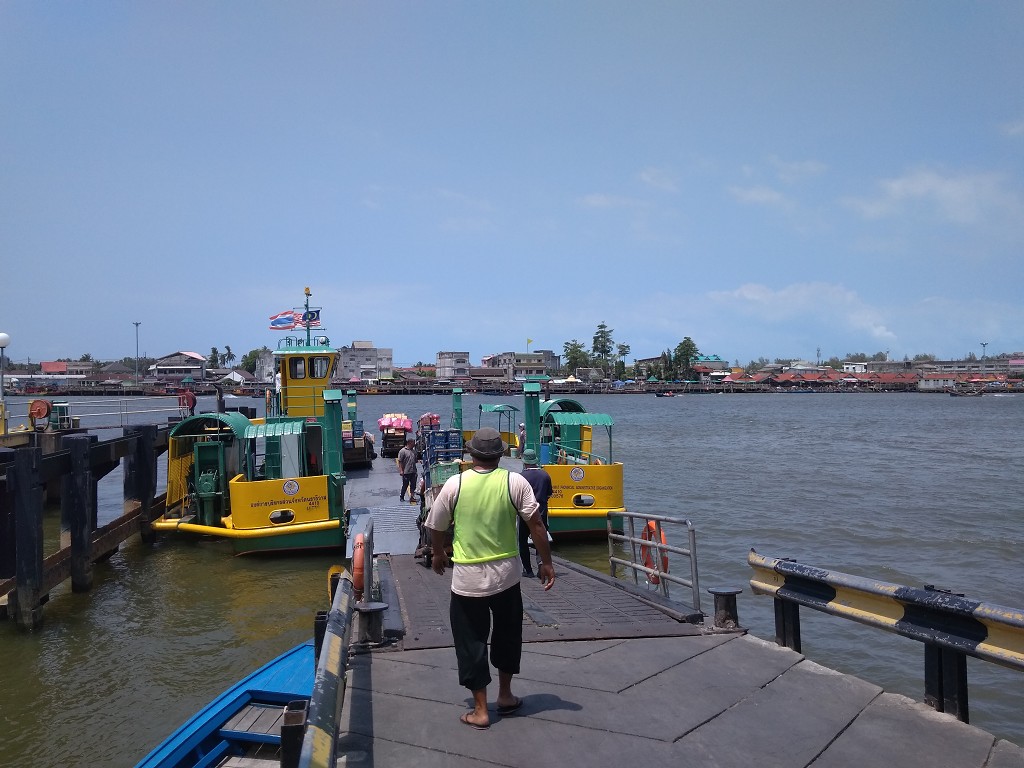
Entering Malaysia at Tak Bai – Tumpat
A few officials point us to the right immigration office for non-Malays. There’s a small queue from the other people, including the group of travelers headed for Indonesia. We receive some forms to fill in and let other people pass us in the queue. We use the hitchhiking sign as a clipboard. The form asks us for the regular info like name, passport number, address in Malaysia, date, and signature. But the most prominent question on the form is “Have you been to China in the last 14 days?”
Negative, form. Negative.
It’s our turn and Jonas goes first again. He needs to scan only his two index fingers and show his face. It doesn’t take long before the bum-bum sound of a fresh passport stamp happens. Jonas is in. My turn goes similarly. I notice that the immigration officer spends some time searching for my China entry stamp, which he probably also did in Jonas’ passport. It draws attention, but it clearly states that we’ve been in China well before the Coronavirus COVID-19 outbreak. Stampedy stamp-stamp and he returns my passport. I make sure to air dry it well so it won’t smudge the clean page next to it.
Welcome to Malaysia!
We grab our backpacks and leave the immigration office. First, we go to the ATM nearby to get some Malaysian Ringgit. Then we walk through customs, who are also unconcerned with our huge backpacks. We leave the gate area and walk towards the road to Kota Bharu. We’re now in the district called Tumpat in the state of Kelantan. Kota Bharu is only 27 kilometers away now.
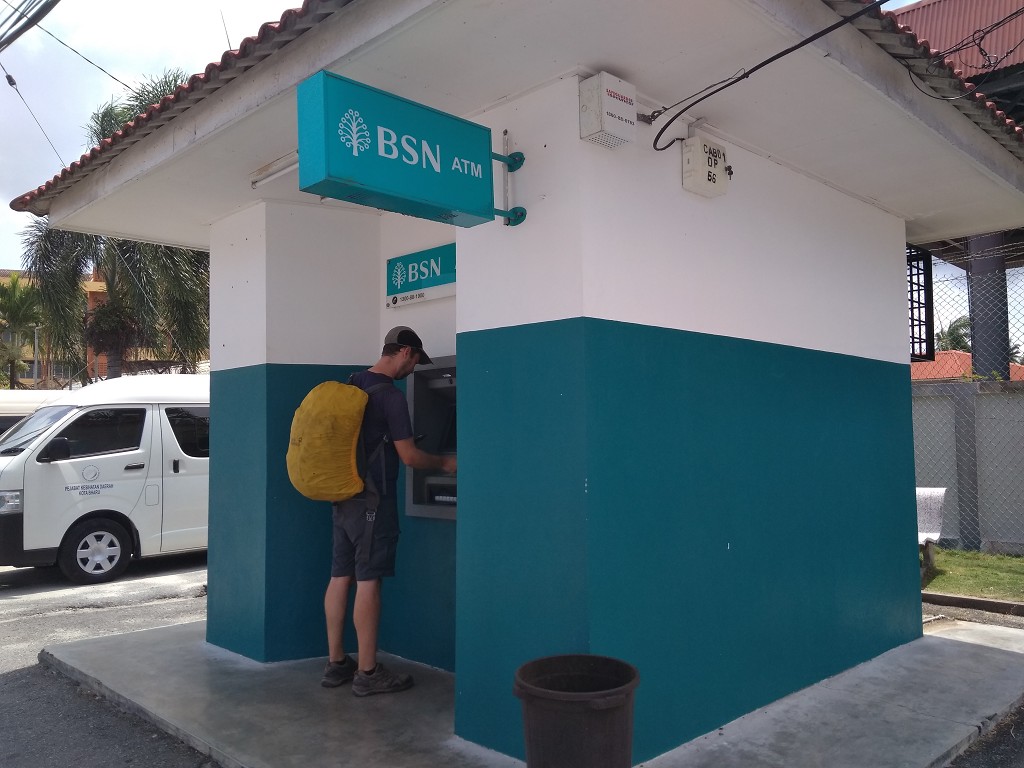
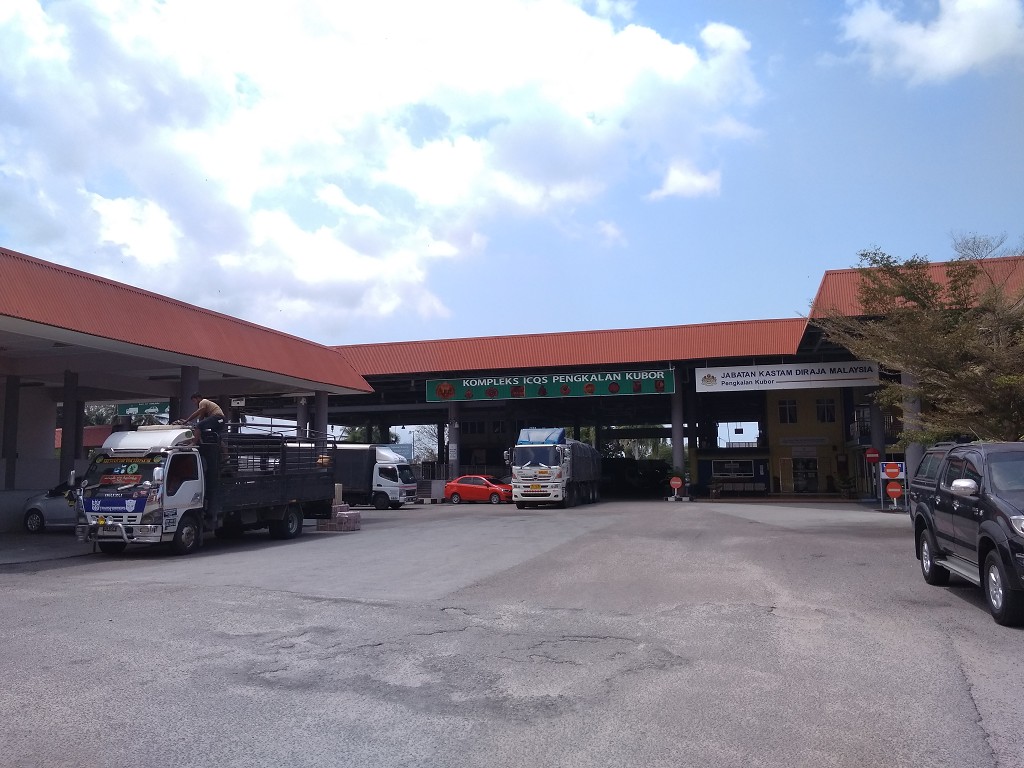
There’s a nice spot in the shadow where traffic from the border and another road passes us by. We decide to set up shop here and try to catch our first ride in Malaysia. According to my phone, it’s 13:00, but that is Thai time. Due to the one-hour time-shift in Malaysia, it’s actually 14:00.
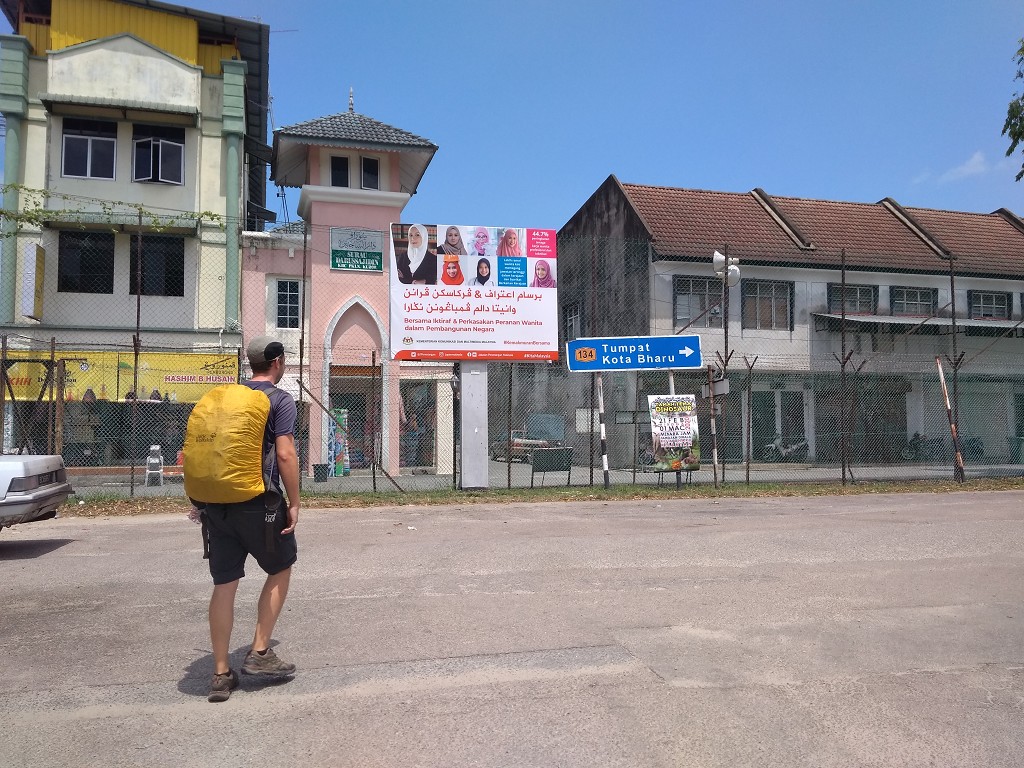

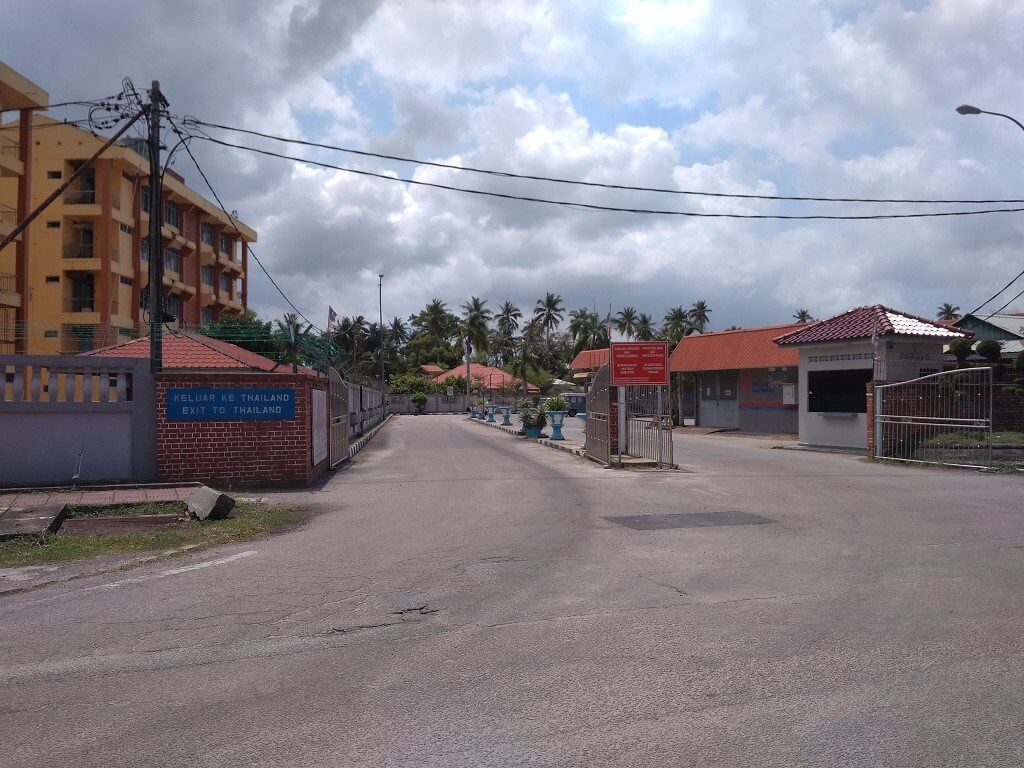
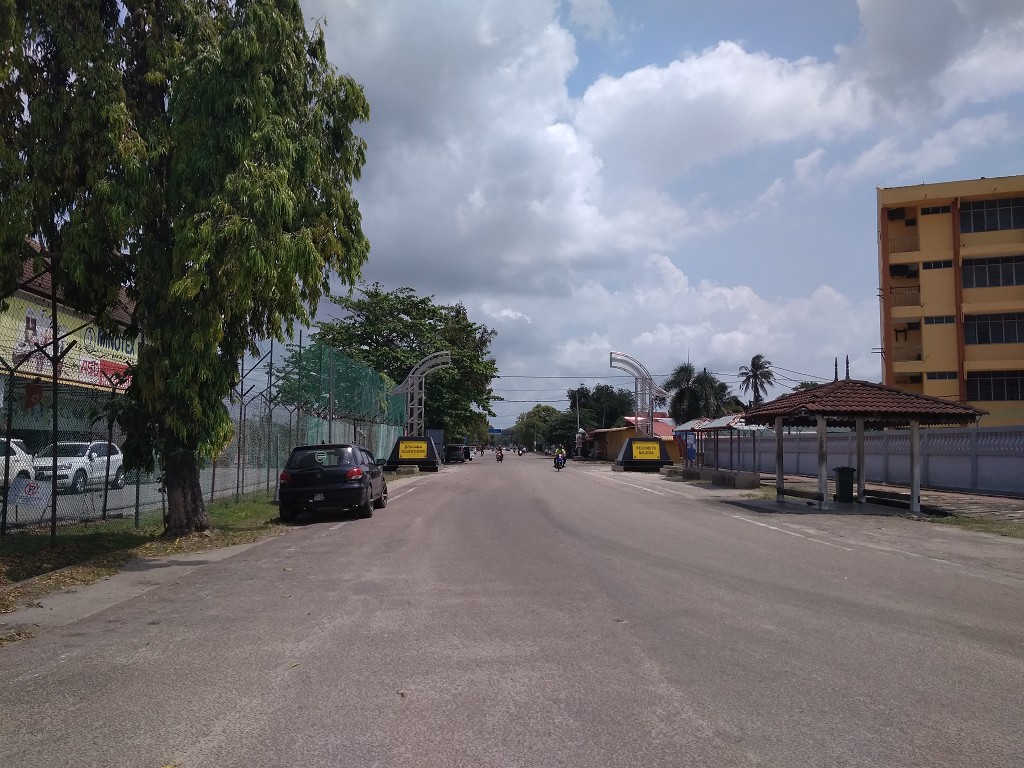
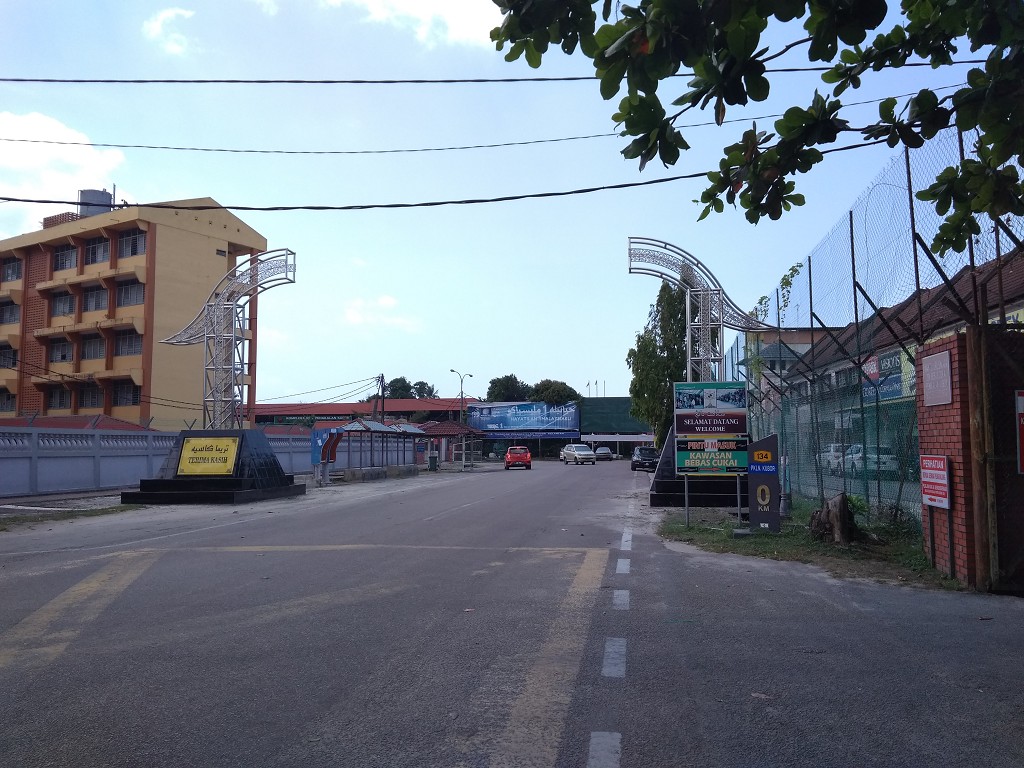
Our First Hitch in Malaysia to Kota Bharu
Many people stare at us and smile, but no one stops. We’d read HitchWiki, which promised that people would know what hitchhiking is and also speak some English. It’s not getting frustrating because we know it’s probably also possible to take a taxi from here. In fact, the first people on foot that stop to make a chat say that we’re one street away from a taxi stand. We thank them for the offer but say we’re hitchhiking. The word doesn’t ring a bell.
At 13:20, a group of women and girls on foot and on motorbikes congregates around us. They read the Kota Bharu sign out loud and point towards the taxi station. We point towards the direction of Kota Bharu and then at a car that drives by. The car stops and a window rolls down. The women talk a bit about what the foreigners are standing around for. I approach the young woman in the passenger seat and show the sign. I ask if she’s going to Kota Bharu.
“Yes.”
“Do you want to take us to Kota Bharu?”
She turns to the other woman who is driving and exchanges a few words.
“Do you speak Malay?” She asks, which I say I don’t.
She gets out of the car and opens the trunk. Jonas’ backpack goes in the trunk but mine goes in the back along with us. We wave goodbye to the crowd who also realize that whatever issue we were having was solved now.
Arriving in Kota Bharu
The two women drive off in silence. I really hope we don’t smell bad.
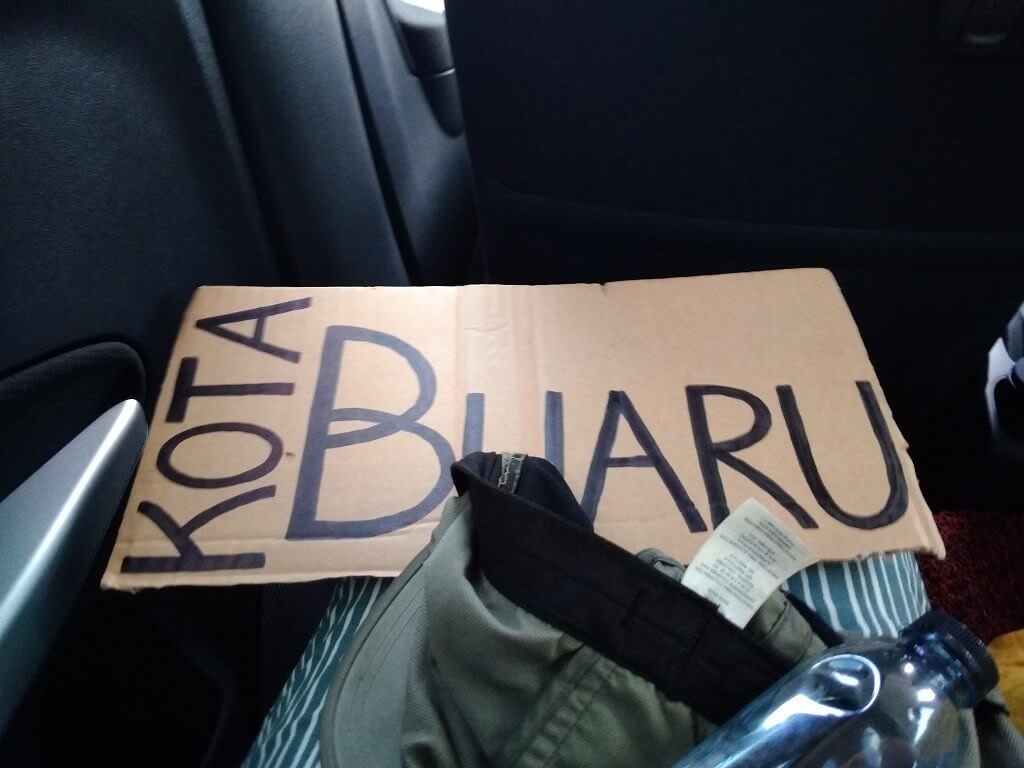
“Husband?” the woman in the passenger seat asks with a pointed glance. To Jonas, it felt like there were a solid ten seconds of silence. “Boyfriend,” I say, slapping Jonas on the shoulder. They start laughing and we soon follow.
I ask their names: Siti and Nadrah. They say they’re siblings. I introduce ourselves too. They ask where we’re going in Kota Bharu and Jonas gives them the name and address of the hotel Crystal Lodge in the center. Then silence falls again. That’s OK. It feels great to already hitchhike on our first day here in Malaysia.
When overtaking a motorbike really closely, something hits the windshield L O U D L Y. It spooks all of us in the car, but any indication of what hit us remains a mystery. It sounded kind of like a splat, so it could have been a heavy fruit or something.
I ask them if they’re working or studying. The driver Nadrah is studying Human Resource Management and Siti works as a teacher. They ask what our jobs are, of which “programmer” is always a well-received one.
We get stuck in a traffic jam in Wakaf Bharu trying to cross the bridge across the train tracks. Nadrah decides to bypass traffic. We pass the huge Al-Ismaili mosque and then enter the big bridge across the Kelantan River. I snap some crappy photos. We’re almost in Kota Bharu!
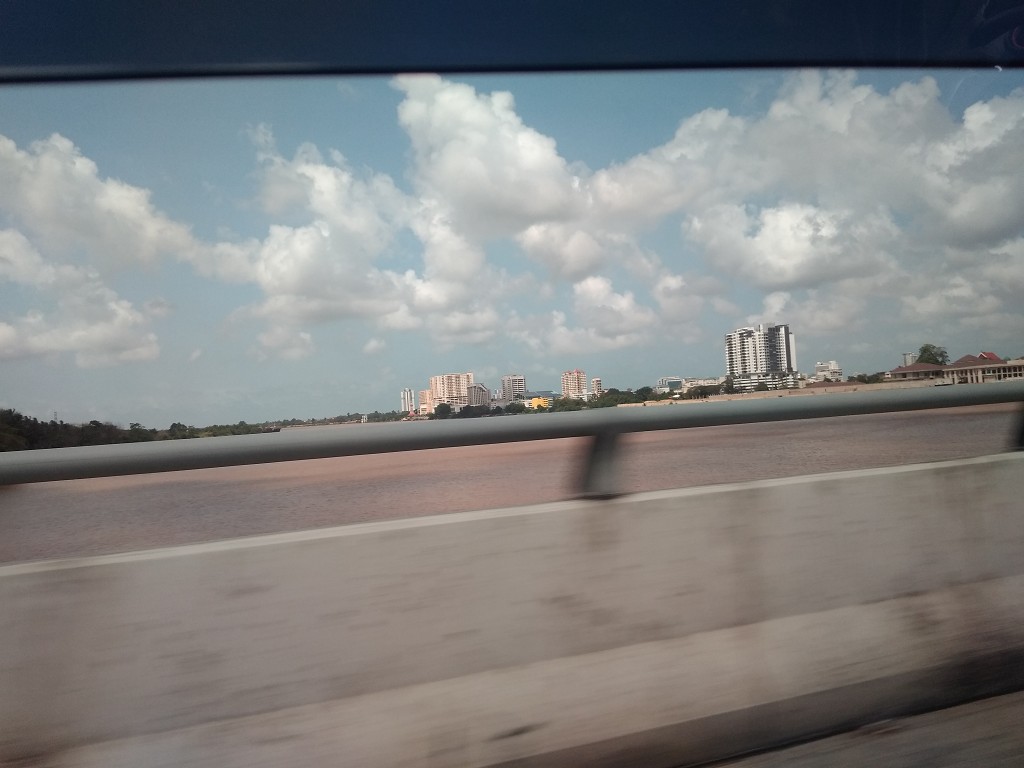
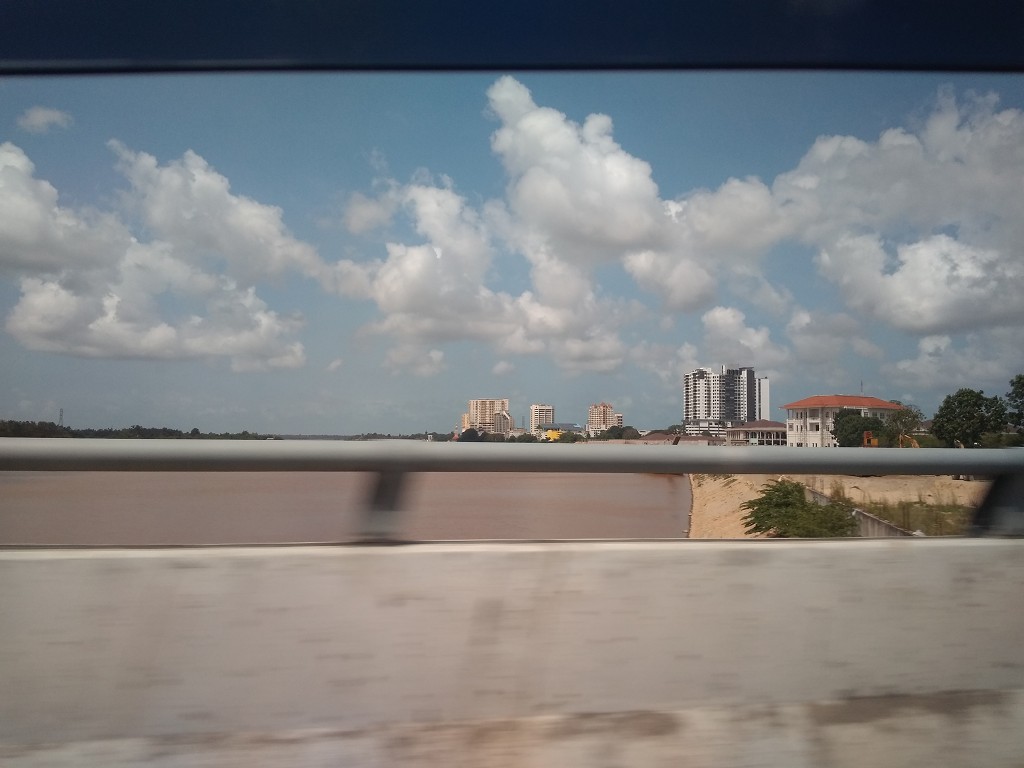
They drop us off in front of our hotel on the easily accessible edge of the center of Kota Bharu. We get our stuff out of the car and thank them for the ride, but we can see that they want to ask us something.
“Can we take a selfie?”
“Yes of course!”
They snap a few photos with all four of us and thank us. We thank them and they get back into the car to drive off. We enter the hotel, where an army of employees greets us with a humble hand over the chest and a slight bow. They do this almost completely synchronized. It’s 15:00 in Malay time.
After checking in to the room and dropping off our stuff, we head into town to wolf down some food and get Malay SIM cards.
Hitchhiking Map
Thank You for Reading!
